Giants Top 100 Players | New York Giants - Giants.com
New York Giants Top 100 Players

1 - Lawrence Taylor

2 - Roosevelt Brown

3 - Mel Hein

4 - Frank Gifford
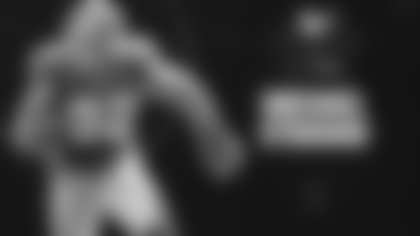
5 - Michael Strahan
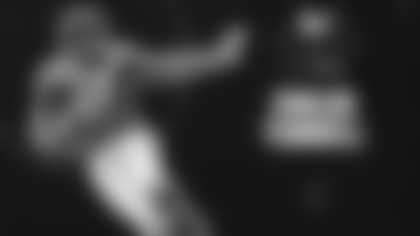
6 - Emlen Tunnell

7 - Harry Carson
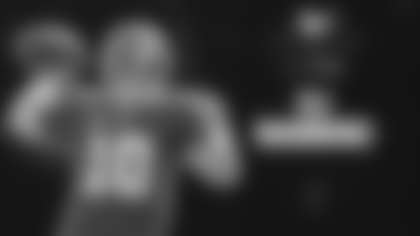
8 - Eli Manning
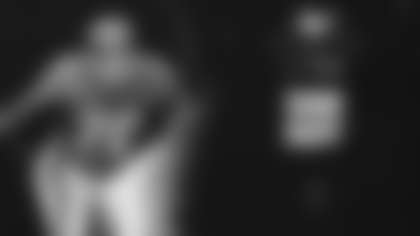
9 - Sam Huff
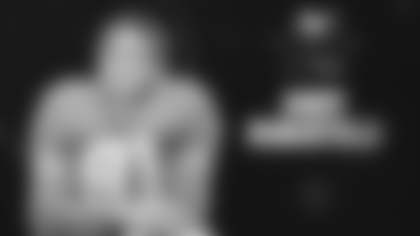
10 - Andy Robustelli

11 - Phil Simms

12 - Y.A. Tittle

13 - Charlie Conerly

14 - Tiki Barber
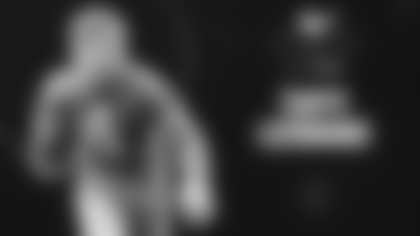
15 - Tuffy Leemans

16 - Amani Toomer
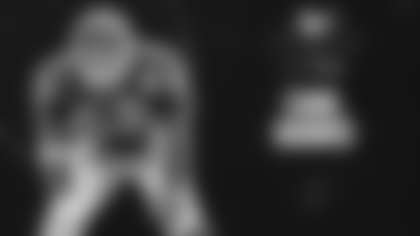
17 - Carl Banks
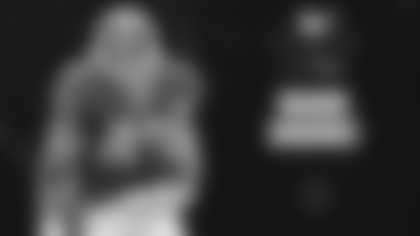
18 - Mark Bavaro
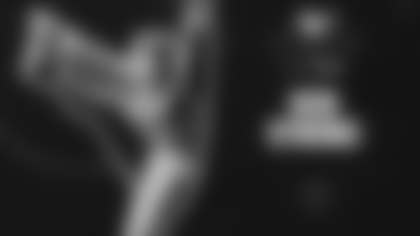
19 - Ken Strong

20 - Jimmy Patton

21 - Arnie Weinmeister

22 - Jim Katcavage

23 - Del Shofner

24 - Kyle Rote

25 - George Martin

26 - Leonard Marshall

27 - Homer Jones
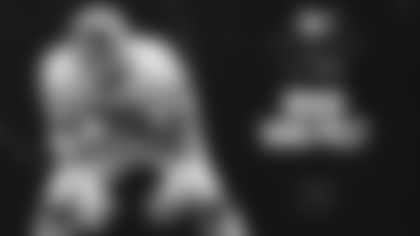
28 - Brad Van Pelt
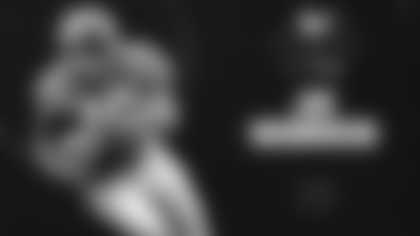
29 - Joe Morrison

30 - Justin Tuck

31 - Chris Snee

32 - Osi Umenyiora

33 - Fran Tarkenton

34 - Jessie Armstead

35 - Rosey Grier
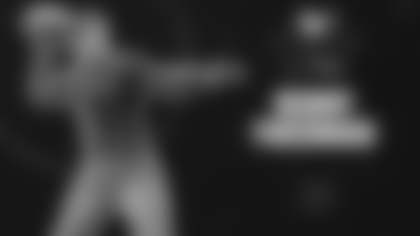
36 - Benny Friedman
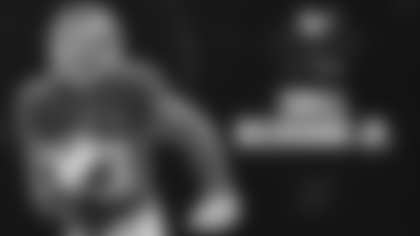
37 - Odell Beckham Jr.

38 - Joe Morris

39 - Alex Webster
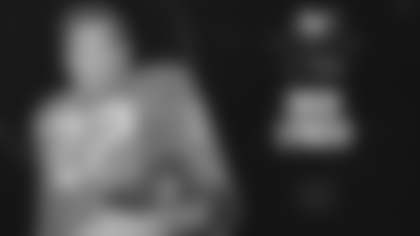
40 - Dick Lynch

41 - Bart Oates

42 - Pete Gogolak

43 - Bob Tucker

44 - Jack Stroud

45 - Rodney Hampton

46 - Plaxico Burress

47 - Sean Landeta

48 - Jeremy Shockey

49 - Spider Lockhart

50 - Ray Flaherty

51 - Ottis Anderson

52 - David Diehl

53 - Dave Jennings

54 - Steve Owen

55 - Tom Landry

56 - Mark Collins

57 - Ward Cuff

58 - Ray Wietecha

59 - Victor Cruz

60 - Jumbo Elliott

61 - Jason Pierre-Paul

62 - Greg Larson

63 - Dick Modzelewski

64 - Jim Burt

65 - Shaun O'Hara

66 - Cal Hubbard

67 - Brian Kelley

68 - Keith Hamilton

69 - Brandon Jacobs

70 - Red Badgro

71 - Antonio Pierce

72 - Ron Johnson

73 - Don Chandler

74 - Jack Gregory

75 - Pepper Johnson

76 - Gary Reasons

77 - John Mendenhall

78 - Mark Haynes

79 - Jeff Hostetler

80- William Roberts

81 - Frank Cope

82 - Kareem McKenzie

83 - Kerry Collins

84 - Ahmad Bradshaw

85 - David Meggett

86 - Erich Barnes

87 - Corey Webster

88 - Howard Cross

89 - Jason Sehorn

90 - Aaron Thomas

91 - Lawrence Tynes

92 - Darrell Dess

93 - Terry Kinard

94 - Erik Howard

95 - Saquon Barkley

96 - Willie Williams

97 - Hakeem Nicks

98 - Eddie Price

99 - Brad Benson

100 - Rich Seubert
1 - Lawrence Taylor
The GOAT acronym is overused in today's sports lexicon, but Lawrence Taylor is the Greatest Of All Time. Taylor joined the Giants as the second overall selection of the 1981 NFL Draft and played his entire 13-year career for the team. When Taylor retired, he was the NFL's No. 2 all-time sack leader with 132.5. That total does not include the 9.5 sacks he accumulated as a rookie in 1981 before the sack was an official statistic.
Taylor established an NFL record by appearing in 10 consecutive Pro Bowls from 1981 to 1990. He was named the NFL Rookie of the Year in 1981 and a unanimous choice to the NFL's All-1980s team. He was also a unanimous selection as the NFL's Most Valuable Player in 1986, when he had a career-high 20.5 sacks, 105 tackles, five passes defensed, and two forced fumbles. No defensive player has won the award since him. Taylor was named to the NFL 100 All-Time Team when the league celebrated its 100th anniversary.
"I'm honored to be part of such an exclusive group of great players," Taylor said. "I'm humbled that my legacy continues all these years later, I know how fortunate I am for that. I want to acknowledge Mr. [Wellington] Mara for his support during my career; Bill Parcells, who will always be my coach; coach [Bill] Belichick, whose accomplishments speak for themselves; and each and every one of my teammates. Couldn't have done it without them. Lastly, the Giants fans – they were with me the day I arrived in 1981 and have never left my side. I'm forever grateful."
2 - Roosevelt Brown
Regarded as one of the best steals in draft history, Roosevelt "Rosey" Brown played for the Giants from 1953 to 1965 after joining the team as a 27th-round choice out of Morgan State. Brown held the starting tackle spot for 13 straight seasons. During that period, he was named to the Pro Bowl nine times and was selected All-NFL eight consecutive seasons. In 1956, when the Giants won the league title, Brown was named Lineman of the Year by the Associated Press.
Brown was a big, strong blocker who had the speed to make a block downfield. He was also used along the defensive front on goal line stands. Brown helped the Giants advance to the NFL Championship Game in 1956, 1958, 1959, 1961, 1962, and 1963. After his playing career, Brown continued his Giants affiliation as a coach before being appointed as a scout. In 1975, Brown became only the second player to be elected to the Pro Football Hall of Fame on the merits of his offensive-line play alone.
"In 1953, I went with the Giants," Brown said in his induction speech. "There, God was really good to me because he sent me to a team that was number one, as far as I was concerned. The Maras – Well Mara, Tim Mara, Jack Mara, his son – well, they have all been like a family to me. Football, as far as I am concerned, is the number one sport. Football will always be the number one sport. Have any football players out there listened to me today? Treat this game good. Treat football good, and it will be good to you."
3 - Mel Hein
Following a successful college career at Washington State, Mel Hein wrote to several NFL clubs offering his services. According to lore, the Providence Steamrollers bit first, offering $125 per game. Hein signed and mailed the contract only to learn the next day that he could get $150 from the Giants. So, he sent a wire begging the postmaster in Providence to intercept the other contract and return it. Fortunately for the Giants, the first contract was returned and Hein destroyed it. The rest is history.
The durable, two-way star at center and linebacker went on to play 15 seasons, a then-team record later tied by Phil Simms and Michael Strahan and exceeded only by Eli Manning (16 seasons). He was named first-team All-NFL center eight straight years from 1933 through 1940. He also earned second team All-NFL recognition five other times. He was named the league's Most Valuable Player in 1938 after anchoring a line that helped guide the Giants to the NFL Championship with a 23–17 victory over the Green Bay Packers in the Polo Grounds. He was the team captain for 10 seasons. Hein was a 60-minute regular, playing in 170 games, and is remembered as one of the most durable players in NFL history.
That quality earned him the nickname Old Indestructible in the early days of football, when there was no platooning and players went 60 minutes every game. He called for an injury time-out just once in his career – for hasty repairs to a broken nose. He never missed a game in high school or college and sat out just one in the NFL, at Brooklyn on November 30, 1933, due to injury. He was elected to the College Football Hall of Fame in 1954 and became a charter member of the Pro Football Hall of Fame in the Class of 1963. "We played 60 minutes in those days," Hein once said. "I don't think I would have liked to play just half the time as they do today."
4 - Frank Gifford
Frank Gifford was the ultimate Giant. Wellington Mara loved him like a son and was proud to act as his presenter for the Pro Football Hall of Fame, a favor Gifford returned years later by presenting him in Canton. "For me, for 25 years, Frank Gifford has personified the son every father dreams of, the player every coach dreams of, the father any son would cherish," Wellington Mara said at Gifford's induction.
Gifford played for the Giants from 1952 to 1964, although he did not play in 1961 due to a serious injury suffered the previous season. He was known as one of the most versatile backs in NFL history. Gifford was the first choice in the draft by the Giants in 1952 after an All-American career at Southern California. He totaled 9,862 combined yards during his career. He rushed for 3,609 yards, caught 367 passes, and scored 484 points. Gifford was named to the Pro Bowl as a defensive back in 1953 and as an offensive back the following year – a first in NFL history. He played in seven Pro Bowls and was named All-NFL four times and NFL Player of the Year in 1956. Gifford holds the Giants touchdown record with 78. A true triple-threat back, Gifford threw 14 touchdown passes in 60 attempts on the halfback option.
He retired after the 1960 season and returned in 1962 at a new position, flanker. The Giants reached the NFL Championship game five times during his career, including their victory in 1956. Gifford was an icon of the game, both as a Hall of Fame player and a Hall of Fame broadcaster for CBS and ABC. Gifford's charisma on the field and on the air were important elements in the growth and popularity of the modern NFL. He was a great friend to everyone in the league and a special adviser to NFL commissioners, and served NFL fans with enormous distinction for so many decades.
5 - Michael Strahan
Michael Strahan did not begin his Giants career in 1993 expecting one day to be enshrined in the Pro Football Hall of Fame. "My goals when I first started were just to make a little money so I didn't have to move back in my parents' house," Strahan said. "I just didn't want to live with my parents. That was my goal – to try to just make my parents proud, make them happy, play hard, and just do the best I could do." He certainly succeeded at that.
Strahan played for the Giants from 1993 to 2007. He joined the Giants as a second-round draft choice in 1993 – No. 40 overall – but he was the first selection that year for the team, which did not have a first-round pick. He retired as the franchise leader in games played (216) and sacks (141.5), as well as the NFL's single-season sacks recordholder with 22.5 in 2001. Strahan was a four-time firstteam All-Pro: 1997, 1998, 2001, and 2003. He was the 2001 NFL AP Defensive Player of the Year. Strahan was selected to seven Pro Bowls. Only four Giants were selected to more Pro Bowls, and all are Hall of Famers: linebackers Lawrence Taylor (10) and Harry Carson (9), offensive tackle Rosey Brown (9), and cornerback Emlen Tunnell (8).
In addition to his impressive statistics, Strahan was a team leader whose gregariousness, insight, and humor made him a go-to guy for the media and a favorite among his teammates. The defensive-line meeting room was known as an area where thick skin is requisite, in part because of Strahan's skill at delivering – and his willingness to receive – a cutting barb. Strahan was a captain of the 2007 Giants team, which won Super Bowl XLII.
In his final game on February 3, 2008, Strahan had three tackles and two quarterback hits and knocked down a pass in the Giants' 17–14 defeat of the 18–0 New England Patriots in Super Bowl XLII. Fittingly, the last tackle of his career was a six-yard sack of Tom Brady in the third quarter.
6 - Emlen Tunnell
After being ignored in the NFL draft, Emlen Tunnell walked into the Giants' office in 1948 and asked founder Tim Mara for a tryout. Thus, he became the first African American to play for the Giants and eventually the first to be elected to the Pro Football Hall of Fame.
That is only part of the incredible story that is Tunnell, who suffered a broken neck at the University of Toledo, an injury so severe that both the army and the navy rejected his efforts to enlist during World War II. This did not stop his desire to serve his country. The Coast Guard accepted him as a steward's mate, a role in which he served from 1943 to 1946, and on two occasions, he was credited with saving the life of a shipmate. Following his service, he enrolled at the University of Iowa. He left the Hawkeyes after the 1947 season and recorded seven interceptions in his debut campaign in the NFL, returning one for a touchdown to help him earn the nickname Offense on Defense.
Tunnell played 11 seasons for the Giants and still holds franchise records with 74 interceptions and 257 punt returns. In 1952, Tunnell gained more yards on interceptions and kickoff returns than the NFL rushing leader did running the ball. He was named All-NFL four times and played in nine Pro Bowls. After finishing his career with the Packers, Tunnell had a record 79 interceptions. A key strut in the Giants' famed Umbrella Defense of the 1950s, Tunnell was a member of the 1956 championship team with Big Blue and won another title with Green Bay in 1961.
"I could make tackles until I'm 50," Tunnell once said. "Your body may go, but your heart doesn't."
A half-century after he passed away, Emlen Tunnell's legacy continues to grow. Tunnell posthumously received the Coast Guard's Combat Action Ribbon and Silver Lifesaving Medal. The Coast Guard recently commissioned the USCGC Emlen Tunnell, the fourth of six fast-response cutters (FRCs) to be stationed in Manama, Bahrain. Stationing FRCs in Bahrain supports Patrol Forces Southwest Asia (PATFORSWA), the Coast Guard's largest unit outside of the US, and its mission to train, organize, equip, support, and deploy combat-ready Coast Guard forces in support of US Central Command and national security objectives. The US Coast Guard Academy also opened the Emlen Tunnell Strength and Conditioning Center, which will "continue to honor his legacy by inspiring cadets to reach their potential on the field, in the fleet, and in their daily lives."
7 - Harry Carson
The Captain played his entire career with the Giants from 1976 to 1988. An inside linebacker, Harry Carson was selected to nine Pro Bowls, including seven in a row from 1982 to 1988. He led the Giants in tackles six times, was a two-time All-NFL first-team selection, and was the sole captain of the 1986 Super Bowl champions.
Carson joined the Giants as a fourth-round draft choice from South Carolina State, where he never missed a game in four seasons and was a twoyear captain and a Little All-America selection by the Associated Press. A defensive end in college, Carson successfully moved to linebacker with the Giants so quickly and so successfully that he was voted to the NFL All-Rookie team.
Carson played 173 games in a Giants uniform – tying him with Keith Hamilton for seventh all-time – and he was a punishing run defender who also intercepted 11 passes. Carson had 17 sacks, 14 fumble recoveries, and seven forced fumbles. He had 25 tackles (20 solo) in a Monday night game against Green Bay in 1982 and seven tackles in the Giants' 39–20 victory over Denver in Super Bowl XXI. During his prime, Carson was the best run-stopping linebacker in the NFL. In the seven seasons from 1981 to 1987, Giants' opponents averaged only 3.59 yards per rushing attempt, a remarkable achievement for so long a period. During that period, Carson was credited with 856 tackles, including 627 unassisted tackles. He was enshrined in the Pro Football Hall of Fame in 2006.
Carson also famously started punctuating a Giants victory by dumping Gatorade from a large orange bucket on coach Bill Parcells. Carson dousing the coach would soon become an oft-repeated and unforgettable scene from the 1986 season. The Captain even poured popcorn on President Reagan when the Giants visited the White House soon after the Super Bowl.
8 - Eli Manning
No other player in the 100-year history of the franchise wore a Giants uniform longer than Eli Manning. No one played as many games and did so without ever missing one due to injury. He is the only Giants player to win two Super Bowl Most Valuable Player awards, which he earned in the victories against the New England Patriots in Super Bowls XXLII and XLVI. A four-time Pro Bowler, Manning set more than 20 franchise records and earned the universal admiration of teammates, coaches, support staff, opponents, and fans.
"I hope that I've represented the organization in the way that you wanted me to from my first day to my last," Manning said in his retirement speech. "For most of my life, people have called me Easy. Believe me, there is nothing easy about today. Wellington Mara always said, 'Once a Giant, always a Giant.' For me, it's only a Giant."
Manning played his final game on December 15, 2019, when he threw for 283 yards and two touchdowns in a 36–20 victory over the Dolphins at MetLife Stadium. With 1:54 remaining, he stepped into the huddle, only to be removed from the game to receive a long and loud thankyou from Giants fans as he took his final walk off the field in a Giants uniform. "This sport has very few real farewells," Manning said. "But as the clock ran down on our win against the Dolphins this season, I ran to my favorite place in the stadium, the tunnel. I waved to our loyal fans, and then Abby, my kids, ran out to meet me. That was my farewell and a moment I'll cherish forever. There won't be any more tunnel moments for me, and I'll truly miss them." Not as much as the Giants will miss Eli Manning.
9 - Sam Huff
As a rookie, Sam Huff helped lead the Giants to the 1956 NFL championship, including a resounding 47–7 victory against the Chicago Bears in the title game in Yankee Stadium. Huff anchored a defense that also helped the Giants reach the championship game in 1958, 1959, 1961, 1962, and 1963. Huff was a five-time Pro Bowler, a two-time firstteam All-Pro, and a four-time second-team selection, as well as a member of the NFL's 1950s All-Decade Team. He was inducted as a charter member of the Giants' Ring of Honor in 2010.
Huff became one of the NFL's first highly publicized defensive players. In 1959, Huff was named the NFL's top linebacker and was the second pro football player to be featured on the cover of Time magazine. Huff was enshrined in the Pro Football Hall of Fame in 1982. "Sam was one of the greatest Giants of all time," said John Mara, the Giants' president and chief executive officer. "He was the heart and soul of our defense in his era. He almost single-handedly influenced the first chants of 'Defense, Defense' in Yankee Stadium."
Huff played in 168 regular-season games with 159 starts, including 102 games with 99 starts for the Giants. He intercepted 30 passes, recovered 17 fumbles, and was credited with 29.0 sacks (14.5 for the Giants) long before they became an official statistic in 1982. He played in 150 consecutive games before an ankle injury ended the streak in 1967.
The Giants selected Huff in the third round of the 1956 NFL Draft from West Virginia University, where he played guard and tackle. Following some position experimentation in training camp, Huff was inserted at middle linebacker in a 4-3 defense, where he became an immediate star. Huff won recognition for his great individual efforts against the premier running backs of his era, including Jim Brown of Cleveland, Rick Casares of Chicago, and Alan Ameche of Baltimore.
Huff first left the NFL following the 1967 season. But in 1969, he was coaxed out of retirement by new Washington coach Vince Lombardi, the five-time champion and Hall of Famer who was a Giants assistant coach when Huff began his career. After one final season, Huff retired for good but stayed close to football.
Huff was born October 4, 1934, in Edna Gas, W. Va., where he grew up in Coal Camp No. 9, the fourth of sixth children. His father and two of his brothers worked in the coal mines. When he received an athletic scholarship, he became the first member of his family to attend college. Huff was an All-American offensive lineman while helping his Mountaineers to a 31–7 record during his four years at West Virginia. He was also the team's kicker and a catcher on the university's baseball team, showing enough talent to sign a professional contract with the Cleveland Indians. But it was in football where he made his greatest and most enduring legacy.
10 - Andy Robustelli
Andy Robustelli came to the Giants prior to the 1956 season in a trade with the Los Angeles Rams, who received a first-round draft choice. He had been selected by the Rams on the 19th round of the 1951 draft from tiny Arnold College in Bridgeport, Conn. Robustelli played on the Rams team that won the 1951 NFL title. The Giants won the 1956 NFL championship in Robustelli's first season with the team. They won five more conference championships during his tenure, in 1958, 1959, 1961, 1962, and 1963. Robustelli played on a winning team in 13 of his 14 pro seasons and played in eight NFL championship games.
"Andy was a great leader. When he came to us from the Rams, it turned everything around defensively," said Frank Gifford, a former Giants teammate and fellow Hall of Famer. "He fit perfectly into Tom Landry's defense. Tom Landry was such a leader in putting defense into pro football, and Andy was one of the key components of that."
"Andy was part of what, to me, was the best defense ever put together," said Hall of Fame linebacker Sam Huff, who played for the Giants from 1956 to 1963. "We had Andy's experience, and we had Dick Modzelewski, and then we had Roosevelt Grier, and along came another defensive end by the name of Jim Katcavage. We had Emlen Tunnell, who is the best safety to ever play in this league, and Jimmy Patton and Erich Barnes. It was such a great time for everybody. We had the best of the best. And Andy was a leader on that team."
Robustelli was selected to seven Pro Bowls and was named first team All-NFL seven times, two with the Rams and five with the Giants. He was also a three-time second-team All-Pro choice. In 1962, the Maxwell Club selected Robustelli as the NFL's top player, an honor that was then usually given to an offensive player. Although he was small for a defensive end at 6 feet and 230 pounds, Robustelli was a superb pass rusher who was exceptionally quick, strong, and smart. Robustelli was a durable player who played in 175 regular-season games and missed only one in his 14-year career. In his last three years with the Giants, Robustelli was a player-coach.
Robustelli retired following the 1964 season. He was elected to the Pro Football Hall of Fame in 1971 and was one of the 30 original inductees into the Giants' Ring of Honor last season. "He was far and away above the other defensive ends of his era," Gifford said. "Andy was not all that big, but he was very quick. With Andy and Tom Landry, it was almost scary, the anticipation that they had of what was going to be run. He and Tom were very, very close. Whereas Tom was the overall defensive coach, Andy basically ran the defensive line along with the linebackers. He was the leader. Everyone knew that. He was the leader in the clubhouse. He was quiet, but when Andy talked, everyone listened."
11 - Phil Simms
Phil Simms was George Young's first draft choice in 1979, and he played his entire 15-year career with the Giants. He overcame a series of injuries early in his career to become the most productive quarterback in team history not named Eli Manning. Simms held the Giants career records for pass attempts (4,647), completions (2,576), yards (33,462), and touchdowns (199). He was 95–64 (.597) as a regular-season starter and 6–4 in the playoffs.
But Simms is best remembered for his almost flawless performance in leading the Giants to victory in Super Bowl XXI. He completed 22 of 25 passes – including all 10 of his throws in the second half – for 268 yards, three touchdowns, and no interceptions in a 39–20 rout of the Denver Broncos. In one of the easiest votes in history, he was selected the game's Most Valuable Player. "I remember thinking I was going to try to not put any thoughts into my mind playing," Simms said. "I've said this many times: I'm a big reader – I've always been a big newspaper reader my whole life. I read every quote, and I remember Joe Theismann, [Ron] Jaworski – a lot of quarterbacks who said they got to the Super Bowl and it was so different. They were so psyched up that the first quarter would be over before they could settle down and play. I remember thinking years before we went there, 'If I ever play in the game, I'm not going to let that happen.' I thought about it that week. And I wasn't going to let it happen."
Although it was the biggest game of his career, Simms said he was not nervous the night before Super Bowl XXI. "I probably only slept a couple hours," he said. "I sat up and watched TV and didn't worry about it. I always tell people this too: If I could relive my [career], I'd want to change the way I think. Just go in and let it go. Because when I worried about trying not to make a mistake, I played awful. I just didn't work that way. Or I played just OK. I think for quarterbacks, more than any other position, don't let your mind get in the way of what you're doing. And if you get too self-conscious about what you're doing, it's just going to hurt you." The Giants so thoroughly dominated the second half, Simms fired his last pass with 11 minutes remaining, a six-yard touchdown to Phil McConkey. He stood on the sideline and watched Jeff Rutledge hand off on the Giants' last possession. "I was cruising, and I don't remember throwing a ball I thought should be incomplete," Simms said. "I didn't realize until somebody told me in the locker room that I didn't throw an incompletion in the second half." Simms' record-setting showing in Super Bowl XXI was the signature moment of his 15-year career.
In 1990, Simms helped lead the Giants to another championship. But he suffered a broken foot on December 15 and didn't play another down that season. Jeff Hostetler quarterbacked the Giants in the final two regular-season games and in the postseason. "I can't imagine what my life would be like if I wouldn't have won," Simms said. "I always say that if I would have thought about all this stuff before the game, I would have choked. It just didn't cross my mind. People viewed me as a pretty good player just because of the Super Bowl. Now I realize it's all that matters anymore. You could have a hell of a year, throw for 4,000 yards, and nobody cares unless you win playoff games, win the Super Bowl. They don't care. You could play great all year, but if you don't play great in the Super Bowl, then they forget. Then they'll say, 'Oh, you just can't do it in the big game.'" For one glorious Sunday, Simms did it better in the Super Bowl than any quarterback ever has.
12 - Y.A. Tittle
Yelberton Abraham "Y.A." Tittle Jr. led the Giants to three consecutive NFL Championship Games (1961–63) and still holds three franchise records he set six decades ago: most touchdown passes in a season (36 in 1963), most touchdown passes in a game (seven vs. Washington on October 28, 1962), and most consecutive games with a touchdown pass (15 from 1962 to 1964).
Tittle was selected the NFL's Most Valuable Player in 1963. Lawrence Taylor (1986) is the only other Giants player to be so honored. Tittle's No. 14 jersey was retired in 1965. He was enshrined in the Pro Football Hall of Fame in 1971. "Y.A. was one of the finest men I have ever known," said Giants president and chief executive officer John Mara, whose late father, Wellington, was a close friend of Tittle's. "He was a Hall of Fame quarterback and a Hall of Fame person. He brought our team to new heights in the early 1960s and left an indelible mark on our franchise."
Tittle was 34 when he came to the Giants in a trade with the San Francisco 49ers for guard Lou Cordileone on August 18, 1961. In four seasons with the Giants, Tittle played in 54 regular-season games and completed 731 of 1,308 passes (55.9%) for 10,439 yards, 96 touchdowns, and 68 interceptions. In Tittle's first three seasons with the Giants, they won the NFL's Eastern Conference title with records of 10–3–1 in 1961, 12–2 in 1962, and 11–3 in 1963. But they lost the league's championship game each season, to the Green Bay Packers in 1961 and 1962 and to the Chicago Bears in 1963.
Tittle started 11 of 14 games in his 17th and final season in 1964, when the Giants slumped to 2–10–2. It was during that season that Tittle was featured in one of the most iconic sports photos in history. It captured a bloodied and dazed Tittle, sans helmet, kneeling in the end zone in a game versus the Pittsburgh Steelers in Pitt Stadium. The photo, taken on September 20, 1964, was taken by Morris Berman of the Pittsburgh Post-Gazette. Tittle had been knocked to the ground by the Steelers' John Baker after throwing an interception. He suffered a concussion and cracked sternum on the play but didn't miss a game the rest of the season. When he retired following the 1964 season, Tittle held eight NFL records, including games played (176), career completions (2,118), passing yards (28,339), and touchdown passes (212).
13 - Charlie Conerly
Wellington Mara very possibly saw and scouted more players than anyone in NFL history in his 81-year career with the Giants. He was an earnest judge of football talent, and one of the numerous players who strongly impressed him was Charlie Conerly. "Charlie is the best player who is not in the Pro Football Hall of Fame," Wellington often said. "He has better numbers than some quarterbacks who are there."
His long-held opinion is still shared by many today. Conerly is arguably the best in franchise history who is eligible for, but not enshrined in, the Hall of Fame. Conerly played his entire career with the Giants from 1948 to 1961. He was a member of the Giants inaugural Ring of Honor class in 2010. His No. 42 jersey was retired by the Giants in 1962. Conerly was a vital member of the 1956 NFL championship team and led the Giants to the title game in 1958 and 1959. He was the NFL Rookie of the Year in 1948, the league's Most Valuable Player in 1959 (when he received the Jim Thorpe Trophy), and a Pro Bowler in 1950 and 1956. In his debut season in 1948, Conerly set Giants rookie records for pass attempts (299) completions (162), passing yards (2,175), and touchdown passes (22) that stood for 71 years until Daniel Jones broke them in 2019.
Conerly was the quiet leader of the Giants team that popularized pro football in New York in 1956 with an 8–3–1 record and a 47–7 rout of the Chicago Bears in the NFL championship game in Yankee Stadium. Two years later, Conerly's 15-yard fourthquarter pass to Frank Gifford gave the Giants their final lead, at 17–14, in the 1958 title game against Baltimore, the Greatest Game Ever Played. The Giants lost that game in overtime, 23–17. The following season, Conerly, then 38 years old, completed 58 percent of his passes for 1,706 yards and 14 touchdowns and had the NFL's best passer rating at 102.7. But the Giants again lost the title game in Baltimore, 31–16.
At age 40 in 1961, Conerly was replaced as the starter by Hall of Famer Y. A. Tittle, who was acquired in a trade with San Francisco. During his 14 seasons in an era when the forward pass was not nearly as prevalent as it is now, Conerly established Giants records for career passes (2,833), completions (1,418), passing yardage (19,488), and touchdown passes (173), figures that have since been exceeded by Phil Simms and Eli Manning, who, like Conerly, is a former star at the University of Mississippi.
From 1956 to 1961, Conerly played in five postseason games, including four championship games and the 1958 division playoff. He started the first four of those games and was a reserve in the 1961 championship game. In those five contests, Conerly completed 45 of 80 passes for 737 yards, four touchdowns, and two interceptions. Charlie Conerly was inducted into the College Football Hall of Fame and the Mississippi Sports Hall of Fame in 1966 and the Ole Miss Athletic Hall of Fame in 1983.
14 - Tiki Barber
Tiki Barber joined the Giants as a second-round draft choice (No. 26 overall) out of the University of Virginia in 1997. When he retired following his 10th season in 2006, his name was all over the franchise's record book. Barber owns the Giants career marks for rushing attempts (2,217), rushing yards (10,449), and yards from scrimmage (15,632). His 67 total touchdowns are second only to Hall of Famer Frank Gifford.
"Tiki is just a great athlete who happens to play football," Gifford once said. "I think that he is a little like me: If all he was, was a running back, I don't think he'd be playing pro football. If all he was, was a receiver, I don't think he'd be playing pro football. If all he was, was a returner, he wouldn't be playing pro football. Well, maybe he would as a return guy." That was like me," Gifford added. "I never would have made the Giants strictly as a running back. I never would have made it as a return guy, and yet, over the course of my career, I returned lots of kickoffs. I would have never made it as a passer, and yet I have a really high percentage of yards from going out on the option. But if you were to just take one of those things, I certainly would never had had the career that I did. He is the kind of guy who is fun to watch."
Barber's 38 games in which he rushed more than 100 yards were twice as many as No. 2 Joe Morris' total, and his nine 100-yard games in 2004 set another record. Barber broke the longest run from scrimmage in Giants history (95 yards at Oakland on December 31, 2005), and his 55 rushing touchdowns were another one of his records later broken by Brandon Jacobs. A threat everywhere on the field, Barber finished his career second on the franchise's all-time receptions list with 586. His 101.5 yards from scrimmage per game is the best average in Giants history by more than 20 yards (among those who played a minimum 100 games). When he hung up the cleats, Barber had four of the top five Giants season in rushing yards, including a record 1,860 yards in 2005, when he was named first-team All-Pro. Barber also made three consecutive Pro Bowls from 2004 to 2006. In the 2002 season finale against the rival Eagles, Barber recorded 276 yards from scrimmage, a single-game franchise record that stood until Saquon Barkley bested it by three yards nearly 17 years later to the day.
15 - Tuffy Leemans
Alphonse "Tuffy" Leemans played for the Giants from 1936 to 1943. He was personally scouted by Wellington Mara and was a second-round draft choice in the inaugural NFL draft in 1936 out of George Washington. Mara sent a telegram setting up a meeting with Leemans to convince him to accept a career in the NFL with the Giants.
Leemans was the 1936 College Football All-Star game MVP. He led NFL rushers as a rookie in 1936 with 830 yards on 206 attempts. Leemans was named All-NFL in 1936 and 1939. An aggressive, dedicated, doeverything team leader, he totaled 3,142 yards rushing, 2,324 yards passing, and 442 yards receiving and threw 16 touchdown passes during his career.
He was enshrined in the Pro Football Hall of Fame in 1978. "I was picked by a young 17-year-old boy who is now the president and one of my finest friends, Wellington Mara," Leemans said in his enshrinement speech. "I was his first pick, and he is my first pick, and I played under another Hall of Famer and a wonderful man, the late Steve Owen. I have met the finest people in the world. It has been a long haul and a lot of injuries on the way, but I assure you, after seeing what I have seen, it is worth every bit of those bumps."
16 - Amani Toomer
Amani Toomer joined the Giants in 1996 as a second-round draft choice from Michigan and played his entire 13-year career with the team. He played in 190 regular-season games and 11 postseason contests, scoring two touchdowns in the Giants' victory over the Cowboys in a 2007 NFC Divisional Playoff Game and finishing with a team-high six receptions in the Super Bowl XLII triumph over New England.
Toomer holds franchise records for catches (668), receiving yards (9,497), touchdown catches (54), and 100-yard receiving games (22). He finished his career with 82 more receptions than runner-up Tiki Barber (586) and 4,063 more yards than former record-holder Frank Gifford (5,434). Toomer caught at least one pass in a Giants record 98 consecutive games before the streak ended in the 2005 season opener versus Arizona. He broke the Giants' single-season record with 1,343 receiving yards in 2002. At the time of his retirement, Toomer had the three highest single-season receptions totals in team history. Toomer also holds the Giants postseason records for receptions (44), yards (608), and touchdowns (seven). No one else in Giants playoff history has more than four postseason touchdown catches. In addition, Toomer is second in Giants history with 10,924 total yards. (Barber is first with 17,359.) His total includes 1,060 yards on punt returns, 257 yards on kickoff returns, and 110 yards rushing.
17 - Carl Banks
The Giants selected Carl Banks, a consensus All-American linebacker at Michigan State, with the third overall pick of the 1984 NFL Draft.
Instead of being intimidated by the big city, though, Banks embraced it. "I get a call, it's Bill Parcells from the New York Giants," Banks said. "And he said, 'I just drafted you, and I didn't draft you to sit you on the bench – and congratulations.' I was like, wow. I show up to camp, and the first two guys I see are Lawrence Taylor and Harry Carson, sitting right outside of the training room. I introduce myself. I'm so excited to meet these guys, and I say, 'Hi, Mr. Carson. Hi, Mr. Taylor.' And they both just kind of stare at me. And Harry, as only Harry could, he looks at me and says, So, homeboy, what the hell are you going to do to get on the field?'"
As it turned out, he did a lot. The Giants of his era were built on accountability, and nothing could stop Banks. He went on to become one of the premier run-stoppers of his era, a standout on the teams that won Super Bowls XXI and XXV, a Pro Bowler in 1987, and a member of the NFL 1980s All-Decade Team and the Giants Ring of Honor. Banks played in 126 regular-season games and had 36.0 sacks, three interceptions, and approximately 500 tackles. He is still closely affiliated with the Giants; since 2007, Banks has been an analyst on the Giants' broadcast team.
18 - Mark Bavaro
During his six seasons with the Giants, Mark Bavaro was a strong, silent warrior, a tight end who superbly did his job without fanfare or theatrics, a player who could lift a team on his back and lead it to victory.
On December 1, 1986, Bavaro burnished that reputation by literally carrying players from another team and helping the Giants secure one of their most significant victories on the road to Super Bowl XXI. Bavaro took a short pass from Phil Simms and turned it in to a 31-yard gain despite six 49ers making contact with him before the tight end was dragged down. Linebacker Mike Walter was the first with a chance to stop Bavaro, but he bounced off his leg. Linebacker Riki Ellison caught up to Bavaro and put his hand on the tight end's shoulder but lost his grip. At the 32, Bavaro ran into Hall of Fame safety Ronnie Lott, who jumped on his back and tried to knock the ball out of his hands. Bavaro never broke stride. "[Lott] started to ride him down," tight ends coach Michael Pope said. "[Bavaro treated him] like he was just another fly. It didn't affect him." Keena Turner and Don Griffin threw their shoulders into Bavaro, who now looked as though he might run all the way to Oakland. Griffin bounced off and landed five yards away. Strong safety Carlton Williamson finally got a grip on Bavaro and Walter arrived to take a second shot. The 245-pound Bavaro finally gave in to the mass of humanity surrounding him and went down at the 18. He had been carrying defenders for 21 yards.
Bavaro, who had a franchise tight end record of 1,001 receiving yards during the 1986 championship season, was the epitome of toughness but seldom spoke publicly about it. "The spirit and toughness, you didn't have to look any further than [number] 89," said Tom Coughlin, the Giants' wide receivers coach from 1988 and 1990 and then the team's two-time Super Bowl–champion head coach. "He was a great blocker, he was a physical football player, and nobody caught the ball down the seam or through the middle of the field against cover 2 like this guy did. He took incredible hits and still was able to put the ball in great field position. He was just one tough, hardnosed guy. Mark hardly ever said a word. He is a devout Catholic, a very religious guy, but a tough, tough guy. He didn't say much, but you wanted him on your team."
19 - Ken Strong
Ken Strong played for the Giants from 1933 to 1935, in 1939, and from 1944 to 1947. He excelled in every phase of the game – blocking, running, passing, punting, placekicking, and defense. At the time of his retirement, Strong was the Giants' career scoring leader, with 324 points on 13 touchdowns, 35 field goals, and 141 extra points. He scored 17 points to pace the Giants to the 1934 championship game over the Chicago Bears in the famous Sneakers Game. Strong scored a league-high 64 points in 1933 and was All-NFL in 1934.
He began his career with the Staten Island Stapletons in 1932. After four seasons, he joined the Giants. In 1936, he began a two-year stint in the rival AFL. Strong served as a placekicking specialist only when he returned to the Giants from 1944 until 1947. He scored 479 points in his career.
Strong was enshrined in the Pro Football Hall of Fame in 1967. "I'd like to say that when the grand master, the architect, of this universe blows the whistle someday in the future, and assembles this great gang out on the field up above," Strong said at the conclusion of his enshrinement speech, "I don't know if I'll be in that starting lineup, but I'll be proud to be sitting on the bench."
20 - Jimmy Patton
Jimmy Patton was an eighth-round draft choice in 1955 who became one of the great defensive backs in franchise history. He played on the 1956 championship team and on teams that advanced to the title game in 1958, 1959, 1961, 1962, and 1963.
Patton was a five-time first-team All-Pro (1958–62), a second-team All-Pro in 1963, and a five-time Pro Bowler (1958–62). His 52 interceptions are second in Giants history, 11 more than No. 3 Spider Lockhart. Patton led the NFL with 11 interceptions in 1958, which tied Otto Schelbacher (1951) for the franchise single-season record. His 712 yards on interception returns are second in Giants history to Emlen Tunnell's 1,240. Patton also recovered 15 fumbles and returned 37 punts and 28 kickoffs, scoring once on each.
Patton was killed in a Georgia traffic accident at just 39 years old.
21 - Arnie Weinmeister
Arnie Weinmeister was one of the first defensive players to captivate the masses in the same manner a star running back or quarterback could. A big and extremely fast player with great ability to diagnose plays, Weinmeister began his pro career with the New York Yankees in the All-America Football Conference in 1950. He moved to the NFL during the 1950 merger. Weinmeister played two ways in the AFC but was used exclusively on defense in the NFL. "He has always had the knack of wearing success with modesty," Hall of Fame presenter John Cherberg said at Weinmeister's enshrinement in 1984. "Except for his size, you would never know he was around. Yes, he is a presence to be reckoned with, which is probably the overwhelming reason why he is admitted to the NFL's Hall of Fame."
"When I start a game, I feel that I must hit my opponent first, and hardest," Weinmeister once said. "Football is a fiercely competitive game, and it's this competitive aspect – the risk – that heightens the excitement."
22 - Jim Katcavage
A fourth-round draft choice out of the University of Dayton, Jim Katcavage arrived in New York in what became a magical 1956 season. The gritty defensive end played on a four-man front that included Andy Robustelli at the other end, with Rosey Grier and Dick Modzelewski in between. Sam Huff, meanwhile, anchored the linebacker corps.
As a rookie, Katcavage helped the Giants win their first NFL championship in 18 years, and they would not win another for three decades. That year, the Giants held eight of their 12 opponents to fewer than 20 points, including three to single digits. "That game was the beginning of the defensive era," Robustelli told the press at the time. "Before then, nobody had paid much attention to defense."
In all, Katcavage played 165 games across 13 seasons (1956–68) for the Giants. More than a half-century later, the record book is still littered with Katcavage's name. A three-time All-Pro and Pro Bowler, he helped the Giants make the championship game six times in the eight years. He was credited with three safeties, a Giants record that is still tied for third most in NFL history. In a 14-game schedule during the 1963 season, he recorded 25 sacks, although it did not become an official statistic until 1982. His 19 fumble recoveries still remain a team record. "Jim was one of our greatest defensive linemen," Wellington Mara said when Katcavage passed away in 1995. "He played the defensive end position on all our greatest teams in the 1950s and '60s. I remember one game where he broke his collarbone in the first half and finished the game."
23 - Del Shofner
Del Shofner was one of the most prolific receivers in Giants history and the owner of a line in the franchise's record book for 57 years. Shofner was a five-time Pro Bowler and a member of the NFL's all-decade team for the 1960s, as selected by the Pro Football Hall of Fame. He played the last seven seasons of his 11-year NFL career for the Giants after joining the team in a trade with the Los Angeles Rams. Shofner retired after the 1967 season with 349 career receptions, including 239 with the Giants. Shofner gained 4,315 yards on those 239 catches, an 18.1-yard average that ranks second in Giants history to Homer Jones' 22.6- yard average (among those with a minimum of 200 receptions). Jones, who played his final season with the Cleveland Browns, holds the NFL record with a 22.3-yard average.
On October 28, 1962, the Giants defeated the Washington Redskins, 49–34, in Yankee Stadium, a game best remembered for the seven touchdown passes thrown by Hall of Fame quarterback Y.A. Tittle. Shofner accounted for one of those scores, on a 53- yard pass. More significantly, he gained a Giants-record 269 yards. The Giants sent two high draft choices to the Rams on August 28, 1961, to acquire Shofner, who was then 26. Ten days earlier, they had traded lineman Lou Cordileone to the San Francisco 49ers for the 34-year-old Tittle. Tittle and Shofner immediately became one of the NFL's most productive passing duos. In his first season with the Giants, Shofner caught a then franchise-record and career-high 68 passes. With 1,125 yards, he became the first Giants player to gain at least 1,000 receiving yards in a season. Shofner followed that up with 1,133 and 1,181 yards, respectively, in the next two seasons. He caught 11 touchdown passes in 1961 and 12 in 1962. From 1961 to 1963, Shofner caught 185 passes for 3,439 yards and 32 touchdowns as the Giants won three consecutive Eastern Conference championships. It remains one of the most prolific three-season stretches ever put together by a Giants receiver.
Delbert Martin Shofner was born on December 11, 1934, in Center, Texas. He played halfback at Baylor University and was named the most valuable player in the 1957 Sugar Bowl for a 57-yard run that set up a touchdown in a 13–7 upset of undefeated Tennessee. Shofner was selected in the first round of the 1957 NFL Draft by the Rams, who first played him at defensive back. He switched to split end the following year and led the league with 1,097 receiving yards and scored eight touchdowns on 51 catches. Shofner was also the team's punter. He had 51 receptions for 936 yards and seven scores in 1959. But a leg injury and ulcers limited him to 12 catches in 1960, prompting the Rams to trade him to New York.
24 - Kyle Rote
Kyle Rote was the first overall selection in the 1951 NFL Draft. He played on the 1956 championship team and in the 1958, 1959, and 1961 title games. Rote played two years at running back before switching to wide receiver because of a knee injury. He was selected to four Pro Bowls (1953–56) and was a two-time second-team All-Pro (1956 and 1960). Rote is still second in Giants history with 48 touchdown receptions and recorded exactly 300 career catches and 4,797 receiving yards. (He was the franchise leader in all three categories when he retired.) He also rushed for 871 yards and four scores before switching from running back to wide receiver. Rote was the Giants' backfield coach in 1962–63 before beginning a long career in broadcasting. He was also a founder of the National Football League Players Association and its first elected president.
''The outstanding backs of that era were Alex Webster and Frank Gifford,'' Wellington Mara told the press when Rote died in 2002. ''Before Kyle hurt his knee, he was as powerful a runner as Webster was and as smooth a runner and as good a receiver as Gifford was. He was a great receiver without having that much speed anymore. But he made some great moves on people. We had many pictures of him going one way and the defender going the other way.'' "Had he not damaged his knee as a rookie, you probably never would have heard of me," Gifford once said. "When I came in '52, he was recuperating from knee surgery. He ultimately could not return to his running back position. He went to wide receiver and had an incredible career, considering he did it on one leg. Had he not stepped in the hole, he would be in the Hall of Fame and I probably wouldn't be." Y.A Tittle said, "There has probably never been a nicer person to ever play the game. Everybody liked Kyle Rote."
25 - George Martin
Over a nine-month period in 2007 and 2008, George Martin walked 3,003 miles from New York to San Diego to raise money for the healthcare needs of the rescue and recovery workers who toiled at Ground Zero after 9/11. Although Martin's expedition was well publicized, it might be only the second most famous long journey of his life.
In the final minute of the second quarter of a game against the Denver Broncos in Giants Stadium on November 23, 1986, Martin, the Giants' veteran defense end, made a onehanded interception of a John Elway pass and returned it 78 yards for a touchdown. It was the Giants' only touchdown in a 19–16 victory over the Broncos, and it was one of the most breathtaking and improbable plays on the Giants' march to victory in Super Bowl XXI. Over the years, Martin has joked how long it took him to reach the end zone. The play actually took 17 seconds off the clock. "That was my preparation for the Walk Across America," Martin said. "If I had to select one play to denote my career, it would be the interception and then the unlikely rumble 78 yards to the end zone. I think that's my greatest accomplishment as a football player on the field." That is not an insignificant statement. Martin played 201 regular-season games with the Giants, and his six touchdowns as a defensive lineman set an NFL record.
Martin was a highly respected team leader who was a member of the Giants' inaugural Ring of Honor class. Martin was one of Parcells' favorite players then and remained so through a 19-year NFL head coaching career. Parcells has just about run out of superlatives after decades of talking about Martin's big play. "We all know George can catch the ball," Parcells said. "He scored a lot of touchdowns – more than some running backs I've had. And once he got going and he ran that little option move on Elway and he was out of the picture, we kind of got going down the sideline. It was really an amazing play. I've said this – I've told George – that's one of the greatest, absolutely greatest plays I've ever seen in football in my career."
26 - Leonard Marshall
Leonard Marshall joined the Giants as a second-round draft choice out of LSU in 1983 and played in 149 regular-season games and 11 postseason games for the team. He played on the Giants' Super Bowl XXI and XXV title teams and was a Pro Bowler in 1985–86, when he totaled 27.5 sacks. Marshall was credited with 660 tackles (388 solo). His 79.5 career regular-season sacks place him third in franchise history, behind two Pro Football Hall of Famers: Michael Strahan (141.5) and Lawrence Taylor (132.5, not counting Taylor's 9.5 sacks as a rookie in 1981, the year before they became an official stat). In 11 postseason games, Marshall recorded 7.0 sacks, which is second in Giants history after Strahan's 9.5. Taylor had 6.5 postseason sacks. Marshall collected 3.0 sacks in both the 1986 and 1990 postseasons, when the Giants won the Super Bowl.
"When I joined this football team, I had no idea of the support and the family that I was walking into," Marshall said when he was inducted into the Giants' Ring of Honor. "I was the big, bad wolf at LSU. I got here, and the biggest, baddest wolves in the game were right here. They were grown men playing a game for money, but they loved it and they played it with all their heart. I got a chance to be a part of something special. You don't win by not winning. You win because you lost, and you recovered, and you remembered what it felt like. So, whenever you take an L, let that L become a W, and remember: You're representing the New York Giants. It takes a minute to destroy what it takes a lifetime to build."
27 - Homer Jones
Homer Jones' name remains in the NFL record book more than a half-century after he was one of the most prolific wide receivers in Giants history. Jones was known for his dazzling speed, and he is recognized as the first player to spike the football after scoring a touchdown.
The Giants selected Jones in the 20th round of the 1963 NFL Draft, although he had already signed with the Houston Oilers of the American Football League. But the Oilers released Jones after he injured his knee in training camp. He called the Giants to ask if they would be interested in giving him a tryout. The Giants sent him a bus ticket to New York. After watching Jones – who had run a 9.3-second 100-yard dash at Texas Southern – coach Allie Sherman placed him on the Giants' taxi squad, that era's version of the practice squad, for the entire 1963 season and part of 1964. In six seasons with the Giants, Jones caught 214 passes for 4,835 yards and 35 touchdowns. Jones' finest season was in 1967, when he finished with career-high totals of 49 receptions, 1,209 yards (a 24.7-yard average), and a league-leading 13 touchdowns and made the first of two consecutive Pro Bowl appearances.
Jones played a final season with the Cleveland Browns in 1970 and finished his career with a 22.26-yard average, which remains the highest in NFL history for receivers with at least 200 catches. "Homer Jones had a unique combination of speed and power and was a threat to score whenever he touched the ball," said John Mara, the Giants' president and chief executive officer. "He was one of the first players [if not the first] to spike the ball in the end zone after scoring a touchdown, and he quickly became a fan favorite. I remember him as an easygoing, friendly individual who was well liked by his teammates and coaches."
28 - Brad Van Pelt
Brad Van Pelt played for the Giants from 1973 to 1983, when the team had only one winning record, but he was one of the team's very best players. Van Pelt joined Harry Carson, Brian Kelley, and later Lawrence Taylor to form the famed group of linebackers known as the Crunch Bunch. He was selected to play in the Pro Bowl every season from 1976 to 1980. Van Pelt played in 143 games for the Giants in four home stadiums – Yankee Stadium, the Yale Bowl, Shea Stadium, and Giants Stadium – and for five head coaches: Alex Webster, Bill Arnsparger, John McVay, Ray Perkins, and Bill Parcells. He had 16 interceptions for the Giants.
29 - Joe Morrison
Known as Old Dependable, Joe Morrison was a third-round draft selection by the Giants in 1959 and played for the team until 1972. Morrison, a seven-time team captain whose No. 40 jersey has been retired by the franchise, played six positions: fullback, halfback, flanker, tight end, split end, and defensive back. A dominant figure during his career, he finished as the Giants' leader in receptions with 395, going for 4,993 yards and 47 touchdowns. He also gained 2,474 yards rushing in his career on 677 carries, with 18 more touchdowns. His 65 total touchdowns still rank third in Giants history behind Frank Gifford (78) and Tiki Barber (68). He was named most valuable player by the Touchdown Club in 1972.
Morrison went on to have a successful coaching career in the college ranks. He led South Carolina to three bowl games, and his 1984 squad posted a then school-best 10–2 record and was ranked as high as No. 2 in the nation after winning its first nine games, earning him National Coach of the Year honors by the Walter Camp Foundation. In his honor, the school created the Joe Morrison Award, which recognizes a standout player each spring. He was also head coach at UT Chattanooga and New Mexico and had a 16-year record of 101–72–7. Morris died of a heart attack on February 5, 1989.
30 - Justin Tuck
One of the finest defensive ends in Giants history, Justin Tuck always measured success by what he accomplished off the field as well as what he achieved in uniform. A third-round draft choice in 2005 from Notre Dame, Tuck played in 127 regular-season games with 90 starts in nine Giants seasons. He was a two-time Super Bowl winner, a twotime Pro Bowler, and a four-time team captain. Tuck was credited with more than 500 tackles. His 60.5 sacks were officially the sixth-highest total in franchise history at the time of his retirement. Tuck also played in 10 postseason games. He had 5.5 sacks, including two sacks of Tom Brady in both Super Bowl XLII and Super Bowl XLVI, when a dominant defensive line was one of the vital components of the Giants' success. Tuck became the first player in NFL history to record multiple sacks in multiple Super Bowls.
Tuck has also made a difference off the field, where he was tirelessly involved in community and charity work, particularly through his RUSH for Literacy program, which raises funds to donate books and other reading materials to benefit New York and his native Central Alabama communities. He was the 2011 Giants Man of the Year, which recognizes a player for excellence on and off the field. "God truly blessed me," Tuck said at his retirement. "We have a saying around here in football, and it's, 'You outkicked your coverage.' For all of you that know about Kellyton, Alabama, I hold that in my heart because that's what made me who I am. Two-hundred seventy-one people, and to come from there and go to a school like Notre Dame, I outkicked my coverage. From there to getting drafted by the New York Giants, I outkicked my coverage. To marry this beautiful woman [Lauran] you see in front of me, and to have these two little bigheaded boys [Jayce and Jonah], I outkicked my coverage. And now, to retire a Giant, I've outkicked my coverage. I couldn't script this day any better."
31 - Chris Snee
Chris Snee was a stalwart on the Giants teams that won Super Bowls XLII and XLVI. He was a four-time Pro Bowler and an All-Pro. Snee started all 141 regular-season games and 11 postseason games in which he played.
"I think Chris was everything you could ever hope for in a player: toughness, integrity, and a lot of pride," Giants president and chief executive officer John Mara said at the time of Snee's retirement. "Winning mattered to him. I think he set a great example for all of the other players. He's somebody we're going to miss very much. He was one of the greatest offensive linemen in Giants history, and he'll be on that Ring of Honor someday." Snee was a Pro Bowler in 2008–10 and in 2012. He was a selected All-Pro in 2010. From 2005 to 2011, he started 101 consecutive regular-season games (plus seven postseason games) before missing a game against Buffalo with a concussion. Snee was the last member of the terrific and popular offensive line that included Shaun O'Hara, Rich Seubert, David Diehl, and Kareem McKenzie from 2006 to 2010. At one time, the group started 38 consecutive regular-season games, then the league's longest streak. "I took pride in being out there every game," Snee said. "You only get so many opportunities to play games, so I am thankful. There were games where I probably was 70 percent, less than that, but I thought I owed it to the organization and to my teammates, coaches, and the fans just to be out there. I'm getting paid to play that day, so I'm going to play." "To me, he was the best guard in all of football – no doubt," said coach Tom Coughlin, who is Snee's father-in-law. "No matter who you put him against, all of the great defensive tackles in the game, the 350[-pound] guys, the 340 guys, he blocked them. When he first came here, he was so, so committed and so driven to excel at the professional level."
32 - Osi Umenyiora
To stand out among the Giants' greatest pass rushers is saying something, and Osi Umenyiora did just that. A second-round draft pick out of Troy in 2003, Umenyiora had 75.0 of his 85.0 career sacks with the Giants, which places him fourth on the franchise's official list. Michael Strahan (141.5), Lawrence Taylor (132.5), and Leonard Marshall (79.5) are the only players with more sacks in a Giants uniform since 1982, when sacks became an official statistic.
In 10 postseason games, Umenyiora had 5.5 sacks, tying him with Justin Tuck for fourth on that franchise list. "Osi was an explosive, smart, crafty edge rusher who was a scary matchup for any offensive tackle in this league in his prime," Giants general manager Jerry Reese said. "He had all the moves and played the game right, and he was a great student of the game."
Umenyiora was the only member of the 2007 world-championship team to play in the Pro Bowl. That season, the Giants had an NFL-high 53 sacks, thanks largely to their three outstanding defensive ends. Umenyiora led the way with 13.0. Justin Tuck, another two-time Pro Bowler, had 10.0, and Strahan had 9.0 in his final season. On September 23, 2007, Umenyiora set the Giants' single-game franchise record with 6.0 sacks of Philadelphia's Donovan McNabb in Giants Stadium. From 2004 to 2010, Umenyiora was the Giants' sole or shared leader in sacks in all six seasons in which he played (not including 2008, when he did not play a game after undergoing knee surgery). Umenyiora was the first Giants player to top the team in sacks four years in a row since Taylor led the team in five consecutive seasons from 1986 to 1990.
But Umenyiora did more than just tackle quarterbacks behind the line of scrimmage. He often separated them from the ball, a play popularly referred to now as the strip sack. Umenyiora is credited with 32 forced fumbles as a member of the Giants.
33 - Fran Tarkenton
Fran Tarkenton's Hall of Fame career began with the upstart Minnesota Vikings in 1961, when he started to attract national attention for his exciting ability to scramble as a quarterback. On March 7, 1967, the Giants announced the acquisition of Tarkenton in a blockbuster trade. The price was two No. 1 and two No. 2 draft picks over a three-year period.
At the time of his retirement, Tarkenton owned every significant passing record to go along with 3,674 yards on the ground. Tarkenton made four of his nine career Pro Bowls with New York.
"When I look back over 18 years of professional football, four years of college football, four years of high school football, which I believe comes to 26 years and a lot of losses, a lot of wins, a lot of disappointments, a lot of high points, and you think you will never get over the losses and the wins that take you up to the highest point," Tarkenton said at his Hall of Fame induction. "And you think, 'Boy, am I pretty good,' and finally you overcome all that, too. And you say, 'What came out of 26 years of playing?' And . . . what comes out are the most important things: not the wins, not the losses, not the awards, not the publicity, and not the money, Lord knows where that ever went. What lives are the experiences of the people that you played with – the Jim Marshalls, the Mick Tinglehoffs, the Carl Ellers, the Bob Tuckers, the Spider Lockharts – and those are the things that live in your heart and stir your soul and move you on. And those are the things that live in your heart, and those are the important things."
34 - Jessie Armstead
Jessie Armstead, a five-time Pro Bowler, was the 207th player chosen in the 1993 draft, and the last of the Giants' seven selections. He was a special-teams dynamo and top-flight reserve his first three seasons before becoming the starting weakside linebacker in 1996.
Armstead had a team-high 114 tackles that year, the first of five consecutive seasons with more than 100. The next year, he had a career-best 134 stops, was selected to his first Pro Bowl, and was a catalyst as the Giants won the NFC East title. In 2000, he had one of his best seasons and the Giants routed the Vikings, 41–0, in the NFC Championship Game.
"You get chills because you always feel like other people are greater to go up there than you are," Armstead said when he was inducted into the Giants Ring of Honor. "It's just an honor. And for all the fans and everybody else who came out here and cheered me on, made me get that energy – some days I was tired, but I heard them cheering and it made me have more energy. For the Giants giving me the opportunity and sticking with me when nobody wanted me coming out of the draft, I mean, I owe my life to them."
35 - Rosey Grier
An actor, musician, author, humanitarian, minister, inspirational speaker, political bodyguard, and one heck of a football player, Roosevelt "Rosey" Grier is perhaps the most interesting man ever to wear the Giants uniform.
Grier was a four-year starter at Penn State, as well as an All-American in the shot put on the track and field team. The Giants selected the 6-foot-5, 284-pound defensive tackle in the third round (31st overall) in the 1955 NFL Draft. He went on to start 85 games for the Giants, making his first of three Pro Bowls and being named First Team All-Pro in 1956, the year he helped the franchise to its fourth NFL championship and first since 1938.
As the season wore on, the Giants began to captivate New York as they never had before. The 1956 Giants were coached by Jim Lee Howell, who had succeeded Hall of Famer Steve Owen two years earlier. Howell's top assistants were Vince Lombardi on offense and Tom Landry on defense, two brilliant strategists who would later win multiple championships as head coaches. The defense was so good, and so popular, the Giants began to introduce the unit instead of the offense prior to games, an unheard-of practice at the time.
36 - Benny Friedman
Benny Friedman, a two-time All-American quarterback at Michigan, played with the Cleveland Bulldogs (1927), the Detroit Wolverines (1928), the Giants (1929–1931), and the Brooklyn Dodgers (1932–1934). Following the 1928 season, Giants owner Tim Mara purchased the Detroit franchise just to secure the services of Friedman.
A versatile player, Friedman could run, kick and pass the ball better than any player who preceded him. From 1927 to 1930, Friedman threw 11, 9, 20, and 13 touchdown passes, leading the league each year. In 1928, he topped the league in both rushing and passing touchdowns; no other player ever accomplished that feat.
"If you are a true fan of the sport, you need to know first about Benny Friedman and Fritz Pollard, pioneers who, simply put, did no less than help keep the pro game alive," Chicago Tribune sportswriter Don Pierson said as the presenter at Friedman's Hall of Fame induction ceremony. "That both men persevered against obstacles of racial and religious prejudice to become examples in sport as well as in greater society gives all of us gathered here today extra reason to owe them thanks. And after many years, we begin today to pay that debt. "Dan Marino is pro football's most prolific passer," Pierson continued. "Steve Young has the highest passer-efficiency rating ever. Benny Friedman was pro football's first passer, period! Oh, there were players who threw the ball a little, but remember, it was a melonshaped thing designed more for dropkicking. And, as you've heard, the rules discouraged passing. This is what George Halas said: 'Friedman was the first pro quarterback to recognize the potential of the pass. Until Friedman came along, the pass had been used as a desperation weapon. Benny demonstrated that the pass could be mixed with running plays as an integral part of an offense.' Halas went on to say it was Friedman's success that influenced rules makers to taper the football. Dan and Steve, you have special reason today to thank Benny Friedman."
37 - Odell Beckham Jr.
Early in the 2014 NFL season, it seemed Odell Beckham Jr.'s rookie year was going nowhere. Instead, he took it to places no first-year wide receiver had ever inhabited. Beckham capped his extraordinary debut season when he was named the Associated Press' Offensive Rookie of the Year, the first Giants player to be so honored in the history of the award. He was the franchise's first Rookie of the Year since Hall of Fame linebacker Lawrence Taylor had won the defensive award in 1981.
Beckham missed training camp, the entire preseason, and the first four regular-season games with a hamstring injury. But he more than made up for his lost time in the final three months, when he crafted the greatest season by a rookie wide receiver in NFL history. Reduced to a 12-game season, Beckham caught 91 passes for 1,305 yards and 12 touchdowns, all franchise rookie records. He was the first wide receiver in NFL history to reach 1,000 yards after missing the season's first three games. (He missed the first four.) Beckham set NFL records for most catches and yards in the first 12 games to start a career.
In addition, Beckham provided one of the most spectacular moments in NFL history with his now-famous leaping, one-handed touchdown catch against Dallas on November 23, 2014, which made him a national sensation.
"When I first made the catch, I didn't know the magnitude of it would have been what it was," Beckham said. "That was just one of the plays, one of the highlights of the season – maybe the main one, but one of the highlights of the season. I felt there were so many other good things that I did."
In just 59 games with the Giants, Beckham climbed to second in franchise history in receiving yards (5,476) and fourth in both receptions (390) and touchdown catches (44).
38 - Joe Morris
Joe Morris joined the Giants in 1982 as a second-round draft choice from Syracuse. He went on to set franchise records (since broken) for rushing attempts (1,318), rushing yards (5,296), and rushing touchdowns (48). At 5-foot-7 and 195 pounds, Morris had 19 games rushing 100 yards or more and still holds the single-season franchise record with 21 touchdowns in 1985. He ran for 1,516 yards in the 1986 championship season and 1,336 yards in 1985. Morris also caught 98 passes for 884 yards and two touchdowns in his Giants tenure. Morris played in two Pro Bowls. He is the Giants' postseason leader with 140 carries, 553 yards, and four touchdowns (the latter now tied with Brandon Jacobs).
In 1986, the Giants were 5–2 after a loss in Seattle and coming home to play Washington on a Monday night and then Dallas. Morris rushed for 181 yards and two touchdowns in each game (27–20 and 17–14 victories). They never lost again that season, as Hall of Fame coach Bill Parcells preferred to move the ball on the ground. "For most of the season, Joe carried us," quarterback Phil Simms said. "There was no doubt." Morris got many of his yards running behind fullback Maurice Carthon, whose crushing blocks became legendary. "Joe made my job easier," Carthon said. "He knew what I was going to do most of the time, and I knew what he was going to do. We really capitalized on that, but it was more Joe as a player and him kind of teaching me the game – how to study and what I need to do, to look at. And we did, and it really worked out for us." "He was the man," Simms said of Morris. "He got it done. The moment that sticks out to me from that season was the playoff game against the 49ers, when he took the ball going off the left side, made a quick dart, and went to the end zone untouched. I just remember the explosion, the quick move, the speed once he got in the open – that was awesome. I remember going to the sideline and kissing him on the head and saying, 'Joe, I don't know how anybody doesn't think you're great. They can't deny it anymore, because you are great.'"
39 - Alex Webster
Alex Webster, who was a great Giants player for 10 seasons and later the team's head coach, played running back from 1955 to 1964. He was a vital contributor to the 1956 NFL Championship team and played in five other championship games.
Webster was the Giants' head coach from 1969 to 1973. "Alex was one of the all-time great Giants," said John Mara, the team's president and chief executive officer. "He contributed so much to our team as a player, assistant coach, and head coach. He was an even better person." "Some of my greatest memories growing up were my father taking me and my brother and sister to Giants games at Yankee Stadium," said Steve Tisch, the Giants' chairman and executive vice president. "I knew early in life what a great Giant Alex Webster is and was and what he meant to our organization."
Webster joined the Giants in 1955 after two seasons with the Montreal Alouettes of the Canadian Football League. He led the Giants with 634 rushing yards that season. The following year, his 694 yards on the ground were second to Hall of Famer Frank Gifford's 819. But Webster ran for two touchdowns in the Giants' 47–7 rout of the Chicago Bears in the championship game in Yankee Stadium. In his career, Webster amassed 7,317 yards from scrimmage (4,638 rushing and 2,679 receiving), with 56 total touchdowns. "Alex was a fantastic player," said Gifford, who remained close to his former teammate after their playing days. "He came down from Canada when we were in a lot of trouble. He turned everything around for us. He played on the other side from me. The same things I was doing at the left halfback, he was doing at the right halfback." Gifford said Webster was a terrific man off the field. "He was a great guy," Gifford said. "He was easy to get along with. Alex made you laugh all the time. He was fun, and he had a great sense of humor. He was really a classy guy."
40 - Dick Lynch
Dick Lynch almost didn't become a successful NFL player and beloved radio announcer. He was ready to end his playing career after his first NFL season in 1958 with the Washington Redskins. He didn't much like playing for the Redskins. And after coach Joe Kuharick left the team to take the job at Notre Dame, Lynch certainly wasn't interested in playing for his replacement, Mike Nixon.
Besides, Lynch had an alternative career. He was going to work for Encyclopedia Brittanica, selling the books door-to-door. Those who knew Lynch figured he would have been either the best or worst encyclopedia salesman on the planet. As affable and sincere as any man you'd ever meet, Lynch would certainly have been welcome in many homes. But he likely would have become so engrossed in conversation, he would have forgotten to actually sell encyclopedias.
Fortunately, Lynch didn't have to pursue that career. The Redskins traded him to the Giants for a fourth-round draft choice prior to the 1959 season, and he remained with the franchise until his death. In 2005, Lynch was honored for his many years of service and for his tireless work for charitable causes as the Giants Alumni Man of the Year. Lynch played for the Giants from 1959 to 1966, a period in which the team played in four NFL Championship Games. Lynch played in 97 regular-season games for the Giants (109 in his career) and intercepted 35 passes. In both 1961 and 1963, he led the NFL with nine interceptions. In 1963, he also led the league with 251 return yards and three touchdowns. Lynch scored seven career touchdowns – four on interception returns and three on fumble returns.
"Dick wasn't the fastest guy in the world, but he was one of the best man-to-man cover guys this league has ever had," Sam Huff said. "He was hand-picked by Tom Landry when Tom Landry was the defensive coach of the New York Giants. He wanted Dick Lynch to come play for him, because he always used man-to-man coverage. Landry's belief was always, 'They have pros, you're a pro, you have to cover them.' Dick lived up to those rules. Every defensive back gets beat once in a while, but Dick Lynch made plays more than anybody I've ever seen. "We were teammates," Huff added. "I'm closer to teammates than I am to my own family. When I played with the Giants, we were family."
41 - Bart Oates
Center Bart Oates, guards Bill Ard and Chris Godfrey, and tackles Karl Nelson and Brad Benson – known collectively as the Suburbanites – became celebrities during the Giants' 1986 championship run. In addition to blocking for Joe Morris and Phil Simms, the five linemen were frequently the targets of coach Bill Parcells' motivational and wisecracking orations. "It's kind of like the Redskins' Hogs or the Chicago Bears' Black and Blues Brothers. For us, this name fits," Oates once said. "We're all the same type of guys. We're all married. We all have little kids. We all live out in the suburbs. We even all do yardwork." "Parcells shot a lot of jibes at us, and one of them was that we all looked like guys that Mom drove to practice," Godfrey said. "We all had responsible offseason jobs and families out in the suburbs, and he was relentless with his little digs."
In turn, Oates and his fellow Suburbanites were relentless on the field. Making his way from the USFL, Oates helped the Giants claim their first Super Bowl title in franchise history in 1986 and then again in 1990. Oates played in 151 games as a Giant, including 11 postseason contests. He earned three of his five career Pro Bowl nods with Big Blue.
42 - Pete Gogolak
Pete Gogolak was ahead of his time. Named one of the 100 Greatest Game-Changers by the NFL, Gogolak, who was born in, and played soccer in, Hungary, approached the ball at an angle and kicked it with his instep – the style all kickers use today. Prior to him, placekickers approached the ball straight on, with the toe making first contact with the ball.
It is not hard to understand why the league adopted his soccer-style kicking. Gogolak played for the Giants from 1966 to 1974 and is still the highest-scoring player in the history of the franchise, with 646 points. He also set franchise records for field goals (126) and extra points (268).
Beyond his prowess as a kicker, Gogolak is a significant figure in the history of pro football. When he moved from the Buffalo Bills to the Giants, Gogolak became the first prominent player to leave the upstart American Football League for the NFL. Wellington Mara signed him after watching rookie Bob Timberlake miss 13 consecutive field goal attempts. "That was a whole new thing when I started as a soccer-style kicker in high school and in college," Gogolak said. "Nobody had ever seen that before, and in the beginning in college and with the Bills, the first time, I had trouble finding a holder because the holder looks at you – I'm coming from the side: 'Is this guy going to kick me? The goal posts are here, you're coming from here – what's going on?' So anyways, yeah, started a trend, and everybody else is doing it now. I think one of the most important things to me to be here is Wellington Mara – I don't know if you remember – the rival between the two leagues, and he had the courage to sign me after I played out my option from the Buffalo Bills. So, it took a lot of courage."
43 - Bob Tucker
Hailing from Bloomsburg University in rural Pennsylvania, Bob Tucker went on to revolutionize the tight end position with his athleticism over the course his 100-game Giants career. He became the first tight end in team history to lead the league in receptions, with 59 in 1971. He is one of just three Giants, regardless of position, to lead the league (Earnest Gray in 1983 and Tod Goodwin in 1935).
With his final game as a Giant coming in 1977, Tucker still holds the franchise tight end career record for receiving yards (4,376). He also held the record for receptions by a tight end (327) until Jeremy Shockey finished with 371.
Tucker holds the rare distinction of playing in four home stadiums for the Giants: Yankee Stadium, the Yale Bowl, Shea Stadium, and Giants Stadium. "My first time in Yankee Stadium was when I played there," Tucker once said. "So, I was like a kid in the candy store going out there, walking around, looking at the monuments and all this history. "I was not drafted — I came to the Giants and, as a free agent, I get a shot to go to training camp in 1970. Being around the New York Giants as a kid growing up, the Giants had all the history. So, when I came to the training camp and you would see Y.A. Tittle and Jim Katcavage and Rosey Brown and Rosey Grier and Emlen Tunnell, this was all history – like a kid in a candy store. They were all welcoming all the time, and they would help you in practice. You had all this history, and I was just so proud to be part of that."
44 - Jack Stroud
A fifth-round choice (61st overall) in the 1951 NFL Draft, Jack Stroud played guard and tackle throughout his 132 games as a member of the New York Giants. He helped pave the way for six conference titles and one NFL championship in 1956, one of the most significant years in Giants history. He made the Pro Bowl three times, in 1955, 1957, and 1960, in addition to picking up second-team All-Pro Honors in 1957, 1960, and 1962.
A Korean War veteran, Stroud was an All-American at the University of Tennessee, where he was also a star on the track and field team, placing first in the javelin throw at back-to-back Southeastern Conference championships.
45 - Rodney Hampton
Rodney Hampton was the Giants' first-round draft choice in 1990 and played his entire eight-year career (104 regular-season games) for the team. Hampton set then-franchise records with 6,897 rushing yards and 1,824 carries before passing the baton to Tiki Barber, who arrived in his final season in 1997. Hampton had five consecutive 1,000-yard seasons (1991–95) and finished third in franchise history with 17 games in which he rushed 100 yards or more, and 49 rushing touchdowns. Hampton was one of eight players in Giants history with at least 3,000 rushing yards and 100 receptions and one of eight with 3,000 rushing yards and 1,000 receiving yards.
The Giants won Super Bowl XXV in his rookie season, but Hampton was unable to play in the game after suffering a fractured fibula in the divisional-round game against Chicago. He later played in three postseason games, amassing 194 rushing yards, eight catches, and two touchdowns. In a wild card victory against Minnesota on January 9, 1994, Hampton carried 33 times for 161 yards, matching the Giants' postseason records set by Rob Carpenter in 1981. Hampton's 51-yard run in that game was the longest in Giants playoff history.
46 - Plaxico Burress
David Tyree and Odell Beckham Jr. have the greatest catches in Giants history, but Plaxico Burress has the most important one. With 35 seconds remaining in Super Bowl XLII, Burress secured Eli Manning's soft pass to score the game-winning points in the Giants' 17–14 victory against the undefeated New England Patriots. The touchdown ignited a wild celebration by millions of Giants fans not only in the New York–New Jersey metropolitan area but also throughout the country and in far-flung areas around the globe.
And it's possible not one of those fans was aware Burress almost didn't play in the game, because he had hurt his knee earlier in the week when he slipped exiting the shower at the Arizona Cardinals practice facility, the site of the Giants' game-week practices. "I didn't know that Plaxico was going to play until about one minute before I had to turn in [the list of inactive players 90 minutes before the game]," coach Tom Coughlin said. The day before the game, Burress was certain he wouldn't play in the Super Bowl. "I could barely walk – how am I going to be able to run?" Burress said. "I ran while I was in a little pool, like a treadmill with water in it. That was my rehab for the week. I'm just trying to stay positive. Dr. [Russell] Warren [then the team's longtime physician] is, like, 'Just stay positive – we're going to make it happen.' [Giants senior vice president of medical services] Ronnie Barnes and everybody are just trying to keep me positive. But I was down-in-the-dumps bad. I'm thinking, 'I get to this point of my career, and I can't even play in the biggest game of my life.'" Because of an ankle injury, Burress had seldom practiced throughout the season.
That didn't prevent him from leading the Giants in all three major receiving categories, with 70 receptions for 1,025 yards and 12 touchdowns. Burress was at his best in the NFC Championship Game, when he conquered Packers cornerback Al Harris with 11 catches for 151 yards in windchill conditions of minus 23 degrees in Green Bay. In just 53 games with the Giants, Burress climbed into the top 10 in the franchise record book with 33 touchdown receptions. One of the best free agent signings in team history, the former eighth overall draft pick by the Steelers averaged 15.1 yards on 244 receptions for 3,681 yards in four seasons with the Giants.
47 - Sean Landeta
Bill Parcells often talked about "hidden yards," but the punter position has been far from unnoticeable in Giants history. Indeed, three of the top five punters in NFL history in net yards have worn the Giants uniform. The list includes all-time leader Jeff Feagles, Brad Maynard, and, of course, Sean Landeta, who helped the Giants win their first two Super Bowl titles in 1986 and 1990.
Landeta played 21 seasons in the NFL, with the first eight and a half coming with the Giants. In those 111 games with Big Blue, Landeta ranks second in franchise history in punts (526) and net yards (18,757) and third in total punt yards (22,806) and punts downed inside the 20 (141). He was named First-Team All-Pro three times and picked for the Pro Bowl twice while with the Giants. The Pro Football Hall of Fame voted Landeta onto the NFL 1980s and 1990s All-Decade Teams. In addition, Landeta has been named to the Philadelphia Eagles' 75th Anniversary Team, the St. Louis Rams' 20th Anniversary Team, the USFL's All-Time Team, the NCAA Division II College Football Hall of Fame, the Pennsylvania Sports Hall of Fame (2009), and the Maryland State Sports Hall of Fame.
48 - Jeremy Shockey
Before there was Odell Beckham Jr., before there was Saquon Barkley, Jeremy Shockey held the distinction as having one of the best offensive seasons by a Giants rookie.
The 14th overall pick out of Miami in the 2002 NFL Draft, Shockey offered a glimpse of what was to come with racking up 80 yards and a touchdown on four catches in the Giants' 34–17 victory over the expansion Houston Texans in the Hall of Fame Game. He went on to record 74 receptions for 894 yards, both of which remained Giants rookie records until Beckham posted 91 catches (Barkley matched it in 2018) for 1,305 yards from the wide receiver position in 2014. The reception total is also the most by any Giants tight end ever in a single season.
''I know in my first year I want to dominate,'' Shockey said when he was drafted. ''I want to make a lot of plays and do what I can to make plays and stretch the defense to get the receivers open on the outside.'' Shockey, who was part of the Super Bowl XLII-winning team, caught 371 passes in 83 games with the Giants, the most from the tight end position in 100 years of the franchise. His 4,228 yards are close behind other tight end greats Bob Tucker (4,376) and Aaron Thomas (4,253). The same goes for his 27 touchdown catches, which trail Thomas (35) and Mark Bavaro (28). Shockey made all four of his career Pro Bowls with the Giants in 2002, 2003, 2005, and 2006. He was named first-team AllPro in his inaugural year when he was also voted to the Pro Football Writers of America All-Rookie Team.
49 - Spider Lockhart
Standing at 6-foot-2 and just 176 pounds, Carl Ford Lockhart gained recognition from pro scouts for his fierce ball-hawking style of play at the University of North Texas. He was drafted in the 13th round of the 1965 NFL Draft by the New York Giants, whose defensive backs coach at the time was Hall of Famer Emlen Tunnell.
Tunnell, the Giants' all-time interceptions leader, would give Lockhart the legendary nickname Spider because he was all over the field and receivers like one. Spider went on to climb up to third place in the franchise record book with 41 career interceptions, three of which he returned for touchdowns, across 145 games from 1965 to 1975. He was named to the Pro Bowl in 1966 and 1968, when he had a career-high eight interceptions. (Two were returned for touchdowns.)
"He was the type of guy that had the speed, and he could run receivers down and was a great support as far as being a free safety," linebacker Brian Kelley said. "We always knew as a linebacker, if he had a running back going up the middle on you, that Spider was always going to be there to back you up. [Spider] is a talker," Kelly added. "He's always talking – he's talking during the play, he's talking after the play, he's talking in the huddle. That's the way he was – what he was trying to do, he was trying to get everybody motivated. The thing about Spider, too, is that he knew everyone's position and he knew where they should be, especially defensive backs. He knew exactly where everybody should be. If you weren't in the right position or someone caught a ball in your area or stuff like that, he wasn't scared to let you know about that."
Following an injury-plagued season in 1975, Lockhart retired from the NFL and went on to have a successful career as a stockbroker. But sadly, in 1986, after a battle with cancer, he passed away at age of 43. For the 1986 season championship season, the Giants paid tribute to Lockhart by wearing a spider patch on their jerseys.
50 - Ray Flaherty
Ray Flaherty spent most of his playing career with the New York Giants, joining the team in 1929. After leaving in 1930 to coach the Gonzaga Bulldogs basketball team, Flaherty rejoined the Giants in 1931 and stayed with the team through the 1935 season.
He was an outstanding end and was named First-Team All-Pro three times and inducted into the Pro Football Hall of Fame in 1976. In 1932, Flaherty led the NFL in receptions, receiving yards, receiving touchdowns, yards per reception, and yards per game. He helped lead the Giants to an NFL Championship in 1934.
Flaherty holds the distinction as the first professional football player to have his jersey number – No. 1 – retired by a team. After his playing days, he took over as head coach of the Boston Redskins in 1936 and remained with the team in its move to Washington, where he won four division titles and two league titles. Two football innovations are credited to Flaherty: the behind-the-line screen pass and the two-platoon substitution system.
When he returned to civilian life after World War II, Flaherty opted to join the New York Yankees of the newly formed All-America Football Conference and won two straight divisional crowns. He closed out his coaching career in 1949 with the AAFC's Chicago Hornets. "It must be the goal of all football players to someday be inducted," Flaherty said in his Hall of Fame enshrinement speech. "I spent about half of my adult life, 24 years – counting the three years I was in the service in World War II – playing and coaching professional football, and I enjoyed every minute of it."
51 - Ottis Anderson
Ottis Anderson joined the Giants in a trade with the St. Louis Cardinals on October 8, 1986. He played on the Giants' Super Bowl XXI and XXV championship teams and was voted the MVP of Super Bowl XXV after rushing for 102 yards and a touchdown in the 20–19 victory over the Buffalo Bills.
Anderson was one of only four running backs in NFL history to score rushing touchdowns in two Super Bowls and win Super Bowl MVP. (Franco Harris and John Riggins accomplished that before Anderson, and Emmitt Smith did afterward.) In 83 regular-season games with the Giants, Anderson had 704 rushing attempts for 2,274 yards and 35 touchdowns (the sixthhighest total in franchise history). He added 77 receptions for 567 yards. After rushing for a total of 214 yards in his first two Giants seasons, Anderson became the team's primary back in 1989. He was named the NFL Comeback Player of the Year after scoring a career-high 14 touchdowns while running for 1,023 yards on 325 carries.
The lasting image of Anderson was a 24- yard run in Super Bowl XXV; he began winding up his arm at the Buffalo 42, planted his forearm into safety Mark Kelso's chest at the 37, and didn't stop until he was chased down by Cornelius Bennett at the 29. "Anderson had an outstanding game, and he personified our Giants team the way he ran," Mark Bavaro said. "He was indestructible – never stopped. Just kept going."
52 - David Diehl
Few players worked harder, played with more enthusiasm, or were more popular among teammates than David Diehl.
He is arguably the most accomplished fifth-round draft choice in Giants history. The 160th overall selection of the 2003 NFL Draft, Diehl started at four offensive line positions, helped the Giants win Super Bowls XLII and XLVI, was selected to the 2009 Pro Bowl, and personified the term "team player."
"I honestly can look back and hold my head high and walk away from this game knowing that I've left everything that I've got," Diehl said at his retirement. "Physically, mentally, everything that I've got, I've left on the football field. Each and every day, physically, I've given everything I've got. This was the team that believed in me. This was the team that gave me my opportunity. To have the special relationship that I've had with Wellington Mara after my dad passed away [in 2003], I wouldn't want to be any place else. I could never see myself wearing a different helmet or uniform. I'm a New York Giant. I've been so fortunate and happy and blessed to be one."
Diehl started the first 120 regular-season games and seven postseason games in his career, the longest such streak by a Giant since the introduction of the 16-game schedule in 1978, and concluded his career with 164 regular-season games played, tying Phil Simms for 12th on the franchise's all-time list. In the regular season, Diehl started 65 games at left tackle, 42 at left guard, 26 at right tackle, and 27 at right guard. In the postseason, Diehl made 10 starts at left tackle and one at left guard.
"When I think of David Diehl, what comes to mind is his indomitable spirit," Coughlin said. "He got the most out of his God-given ability, and that's the best way you can judge any individual. He took the talent that he had and he used it to the extreme, to the utmost of his ability. What more can you ask of the guy? And he gave great effort. He always gave great effort – there was no doubt about that. You knew exactly what you were getting."
"He played so many different positions along the offensive line and never complained and never made an excuse," said Manning, who was driven to home games by Diehl. "He was a guy who practiced in training camp and was prepared to play right tackle – and then, all of a sudden, in the middle of the season, it's, 'Hey, now you have to go play left tackle.' He just went over there and did it. He never made an excuse, and he never looked for a reason not to. He just did his job and did it well for a long time. He protected me for a long time. He's one of my great buddies and just a true warrior."
53 - Dave Jennings
Dave Jennings was the most prolific punter in Giants history, was later a radio analyst for the team, and is a member of the franchise's Ring of Honor.
Jennings played for the Giants from 1974 to 1984. He holds the team records for punts (931, or 405 more than runner-up Sean Landeta) and yards (38,792). Jennings was selected to play in the Pro Bowl in 1978, 1979, 1980, and 1982. He punted a career-high 104 times in 1979, which was the Giants record until Brad Maynard had 111 punts in 1997. Jennings punted for more than 4,000 yards in a season three times (1979–81) and had a career-best 44.8-yard average in 1980.
"Dave was the very first player I met when I came to the Giants," said Hall of Fame linebacker Harry Carson, who joined the team in 1976. "When I met him, I felt so welcomed. Dave was a guy that everyone not only liked but loved. Anyone who knew Dave would say he was a great guy. He was a terrific person with a bubbly personality. The Giants were not very good when Dave and I were teammates in the 1970s. Dave was one of the few bright lights on those teams as a punter.
"Dave was very serious about conditioning. He was the punter, but he was in great shape. He was a fantastic athlete. Dave enjoyed the football experience. He enjoyed the locker room. Dave could have participated in different sports, but he had punting down to a science. He could position the ball where he wanted it to go. He had a terrific sense of placement. He took his job very seriously, and he made it his own little science to punt the ball where it needed to be."
Jennings was born on June 8, 1952, in New York City. He did not play football at Garden City High School on Long Island. Jennings attended St. Lawrence University, where he earned two letters in basketball. After winning the punting job as a walk-on, he was a three-time all-conference selection.
54 - Steve Owen
Steve Owen was a four-time All-NFL tackle who played for the Giants from 1926 to 1931, plus a one-game return in 1933. He captained the 1927 team, which won the NFL title and held its foes to a record-low total of 20 points.
But Owen made his greatest imprint on the sideline, where he coached the Giants for 23 years. He was a co-coach with Benny Friedman in 1930, then the next year assumed the full head coaching responsibility, a position he kept until 1953. Owen had a record of 153–100–17 and won eight division and two NFL titles. The 153 victories are still the Giants record. Some of his coaching innovations included the A-formation offense, the umbrella defense, and the two-platoon system.
Owen was inducted into the Pro Football Hall of Fame in 1966. "I probably knew Steve better than any former New York Giant football player, for two reasons," Mel Hein said when Owen was posthumously inducted into the Hall of Fame. "I played longer than any Giant player, and my first year as a player was Steve Owen's last year as a player, and I got to know Steve Owen not only as a great coach but as a great man in every respect. In describing Steve, you might say that very few of our first-year men on the Giants team got to know Steve very well. He was a taskmaster and rode herd on the firstyear men pretty good, until they proved that they were the type of player that he wanted on his New York Giant football squad. The older boys got to know Steve as a great coach – a man that they would play their heart out for. Steve was very human in every respect. He was a kindly man, he had a heart of gold, he would do anything to help his football players, and, believe me, we respected him."
55 - Tom Landry
Tom Landry was with the Giants as a defensive back from 1950 to 1955 and an assistant coach from 1954 to 1959.
The Giants' 1956 championship team had one of history's greatest coaching staffs. Head coach Jim Lee Howell had Vince Lombardi coaching the offense and Landry coaching the defense. When the Dallas Cowboys entered the league in 1960, Wellington Mara recommended the Cowboys hire Landry as head coach. Landry coached the Cowboys from 1960 through 1988 and led Dallas to 20 consecutive winning seasons, two Super Bowl victories, and five NFC titles.
"The Mara family really meant a lot to me personally," Landry said in his Pro Football Hall of Fame enshrinement speech. "The Mara family, the Halas family, the Rooney family, they are the heart of the NFL. To be a part of that team and see the type of family atmosphere that they had – we didn't always agree, but we were like most families. We could always make up. But I had a chance to play. I had a chance to be a player-coach for them and a defensive coach. When I coached all the way through the '50s with the Giants, I had Vince Lombardi and myself. Vince handled the offense; I handled the defense for the Giants until he went to Green Bay. We had some great teams with the Mara family."
56 - Mark Collins
The Giants' first six draft choices in 1986, their Super Bowl XXI season, were all defensive players, including linemen Eric Dorsey and Erik Howard, linebacker Pepper Johnson, and cornerback Mark Collins. "I remember looking at those guys in training camp and saying, 'We have some help here,'" coach Bill Parcells said. "Pepper Johnson was my nickel linebacker. Collins was my nickel back. Dorsey and Howard – they played more because they were linemen. We got a big contribution out of those kids. I remember thinking to myself, 'We are going to have five or six rookies make the team.' And not only that, but they are going to make the team better."
A second-round pick out of Cal State Fullerton, Collins did just that and contributed immediately with 14 passes defensed, three fumble recoveries, and an interception in his rookie season. The Giants won eight consecutive games to end the regular season to clinch home-field advantage throughout the postseason. "We knew we were going to win," Collins said. "We just had to figure out by how much. We were so confident without being cocky. That came from the leadership of Harry [Carson] and George [Martin]. One thing about this team, we were close then and we're close now. Being around the league – and I played for three other teams – I never played on a group this tight, a group that genuinely cared about each other."
Four years later, Collins was part of a group that played significant roles in another championship run in 1990. In all, Collins started 104 of 112 games as a Giant, recording 17 interceptions, four forced fumbles, and seven fumble recoveries.
57 - Ward Cuff
Ward Cuff joined the Giants as a fourth-round draft choice from Marquette in 1937 and teamed up with Hall of Famers Ken Strong, Mel Hein, and Tuffy Leemans to win three Eastern Division titles and the 1938 NFL championship. (Cuff defensed a last-second Arnie Herber pass into the end zone in the championship game to preserve the 23–17 victory over Green Bay.)
Cuff excelled at several positions in his nine seasons with the Giants. A wingback, fullback, halfback, defensive back, and kicker, he rushed for 1,766 yards on 330 carries (a 5.3-yard average) and caught 101 passes for 1,477 yards. Cuff scored 18 touchdowns (six rushing, 12 receiving) and made 31 of 70 field goal attempts and 98 of 102 extra-point tries. He also had a 12.1-yard punt return average and 13 interceptions. Cuff led or tied for the league lead in field goals a total of four times. Cuff led the Giants in scoring for six consecutive seasons and finished as the franchise leader in points before he was traded to the Cardinals.
Wellington Mara said no Giants player would again wear No. 14 after Cuff retired. When Y.A. Tittle was traded to the Giants in 1961, he requested and was given No. 14. The number is now retired in honor of both players.
58 - Ray Wietecha
Ray Wietecha never missed a game in his 10 seasons with the Giants while anchoring an elite offensive line during the team's glory years of the 1950s and early 1960s.
A 12th-round pick (150th overall) out of Northwestern in the 1950 NFL Draft, Wietecha helped pave the way for five Eastern Conference titles and one NFL championship in 1956. Garnering a reputation not only for his blocking but also for snapping for field goals and punts, he was named to the Pro Bowl in 1957, 1958, 1960, and 1962. He also earned All-Pro honors in 1958.
He appeared in 124 consecutive regularseason games and six postseason games at center on a line that featured Hall of Fame tackle Rosey Brown, Jack Stroud, Bill Austin, Dick Yelvington, and Darrell Dess. They protected quarterbacks Charlie Conerly and Y. A. Tittle and blocked for running backs Frank Gifford and Alex Webster.
''When we won, the Giants' offensive line became famous," Wietecha said. "I became well-known. But first, you've got to win."
Wietecha was said to be the innovator of snapping for placements so the laces of the ball did not face the kicker.
"In four years of placekicking with the Giants," Pat Summerall once recalled, "I never saw the laces of the football. Wietecha always snapped the ball with the strings facing front.''
A native of East Chicago, Ind., Wietecha was part of the Northwestern team that defeated California in the 1949 Rose Bowl. He joined the Giants after playing football in the Marine Corps and minor league baseball in the Washington Senators organization. After he hung up the cleats, Wietecha coached the offensive line under Vince Lombardi when the Packers won Super Bowls I and II.
59 - Victor Cruz
Victor Cruz dropped the first pass Eli Manning ever threw him in a regular-season game. Afterward, the quarterback told him not to worry, because the wide receiver would make plays in the future. That proved to be an understatement.
Cruz, who grew up near Giants Stadium in Paterson, N.J., made the team in 2010 as an undrafted free agent from Massachusetts. He first thrust himself into the spotlight when he scored three touchdowns, the first a 64-yarder, in a nationally televised preseason victory over the Jets. In Cruz's first regular season in 2011, he set a franchise record with 1,586 yards on 82 receptions, one of them a short toss from Manning that he turned into a 99-yard touchdown on Christmas Eve against the Jets. Coaches and players called it the catalyst in the team's run to Super Bowl XLVI, where he caught a touchdown pass in the victory against New England.
"As soon as I got to about midfield and I did my little hurdle, I was like, 'I'm out of here,'" said Cruz – who created a craze that season with his salsa celebration dance – of his touchdown against the Jets. "No one's gonna catch me after that one, because I just knew there was such a driving force behind me that game. I understood exactly what was being asked of me. I knew the motivation behind that whole game, and for whatever reason, I raised it up a level for the Jets. It's the battle for New York, and you just always wanted to make sure that we came out on top of that battle, no matter what I had to do."
Cruz played in only 70 regular-season games, but he will forever live on in the minds and hearts of Giants fans.
"Victor had a terrific career and was a great Giant, and a guy who kind of exploded onto the scene in this preseason game versus the Jets … in 2010," Manning said. "He kind of got injured, missed that whole year, and 2011 is when he came on and really just had a great feel for the offense, for his routes in that slot, and he was tough to cover. Running down the field, breaking in, we gave him a lot of options. He mastered some of those concepts, and we gave him a great opportunity to get open and make big plays for us. Tremendous player, and a great guy."
60 - Jumbo Elliott
Standing 6-foot-7 and weighing 305 pounds, John "Jumbo" Elliott was a second-round pick (36th overall) in the 1988 NFL Draft and made the Pro Football Writers of America All-Rookie Team. He played in more than 200 games, including postseason, across 14 seasons in the NFL – the first eight with the Giants and another six with the New York Jets. Elliott helped pave the way for a 1,000-yard rusher in 13 of his 14 NFL seasons, made the Pro Bowl in 1993, and won Super Bowl XXV with the Giants. A two-time All-American out of the University of Michigan, Elliott was inducted into the College Football Hall of Fame.
"[Bill Parcells] brought out the best in me as a player," Elliott said. "He would say you have to sustain power. That's what it took to be a Parcells guy. Someone who had tremendous ability to sustain power, mental toughness and discipline, and very, very, very top-level work ethic."
61 - Jason Pierre-Paul
When the Giants selected Jason Pierre-Paul 15th overall in the 2010 NFL Draft, team general manager Jerry Reese proclaimed that Pierre-Paul "has the biggest upside of any player in the draft." As an NFL sophomore in 2011, JPP demonstrated why. He used his size (6-foot-5 and 275 pounds), athleticism, and quickness to become a fierce and persistent pass rusher. He had 16.5 sacks, one fewer than the combined total of Osi Umenyiora, Justin Tuck, and Mathias Kiwanuka, and the fourth-highest total in Giants history. Pierre-Paul was selected to his first of three career Pro Bowls and was named first-team All-Pro by the Associated Press. He was twice selected NFC Defensive Player of the Week in December – when he was also named the Player of the Month. One of his most memorable plays that month was blocking Dan Bailey's 47-yard field goal with one second remaining to preserve a Giants victory in Dallas. And JPP was a catalyst on a Giants team that won the Super Bowl for the second time in five seasons.
From 2010 to 2017, JPP played in 111 regular season games for the Giants and recorded 433 tackles, including 58 sacks, seven fumble recoveries, and two interceptions, and scored twice.
"Just relentless," Tuck said. "He made plays that were somewhat remarkable in some cases. It just seemed like he had 'go-go gadget' limbs. I remember some of the sacks he made – it seemed like he was tackling the quarterback and his arms would get there, like, two seconds before the rest of his body would. He was a prototypical lanky, powerful, fast defensive end. If you're thinking about it from the perspective of how you create someone to play that position – big hands, long arms, explosive, fast-twitch power, leverage – he had all that. I think he showcased it in so many different ways where he was able to make moves on the outside and go around the lineman, or power them to the quarterback, or make an inside move to beat them on that side as well."
62 - Greg Larson
No offensive lineman has played more games in a New York Football Giants uniform than Greg Larson, who suited up 179 times for Big Blue from 1961 to 1973. Of the roughly 1,800 players who have appeared in at least one game for the Giants, just eight, regardless of position, have more service time with the franchise than Larson: Eli Manning (236 games), Michael Strahan (216), Howard Cross (207), George Martin (201), Zak DeOssie (199), Amani Toomer (190), Joe Morrison (184), and Lawrence Taylor (184).
Larson was a sixth-round draft choice out of the University of Minnesota, where he was a team captain and helped lead the Golden Gophers to a national championship in 1960. He joined the Giants in a pivotal 1961 season, when Allie Sherman took over as head coach and the organization obtained quarterback Y.A. Tittle (from the San Francisco 49ers) and end Del Shofner (from the Los Angeles Rams) in trades. The Giants reached the NFL Championship Game in the next three seasons. Larson helped block for Tittle as he set numerous franchise and league records. Tittle's 36 touchdown passes and 104.8 passer rating in 1961 still remain the most in a single season in Giants history. The Giants teams of 1962, 1963, and 1967 own the top three spots in most touchdowns scored in franchise history.
63 - Dick Modzelewski
Dick Modzelewski's four-team, 14-year NFL career included an eight-season stint with the Giants, during which he played in six NFL championship games. Modzelewski played defensive tackle for the Giants from 1956 to 1963. The Giants defeated the Chicago Bears in the championship game in his first season with the team and played in the title game in 1958, 1959, 1961, 1962, and 1963. Modzelewski also played in two championship games with the Cleveland Browns, winning one. Following his playing career, Modzelewski coached in the NFL for 22 years, including the 1978 season as the Giants' defensive coordinator.
When Modzelewski entered the NFL with Washington in 1953, each team played a 12- game schedule. That increased to 14 games in 1961. Modzelewski never missed a game in his career, playing in all 180 regular-season contests and eight championship games. Modzelewski was known as Little Mo. His older brother Ed, a teammate of his at the University of Maryland and briefly in the NFL, was Big Mo. Modzelewski was an All-America defensive lineman at Maryland in 1951 and 1952 and won the Outland Trophy, given to the nation's best lineman, in 1952.
Modzelewski was inducted into the College Football Hall of Fame in 1993 and the National Polish Football Hall of Fame in 1986. The Redskins selected Modzelewski in the second round of the 1953 NFL Draft. He played two seasons in Washington before being traded to the Pittsburgh Steelers. After one year in Pittsburgh, Dick Modzelewski was again traded, this time twice in less than a week. The Steelers dealt him to the Detroit Lions, who three days later sent him to the Giants for another defensive tackle, Ray Krouse, his former teammate at Maryland. In New York, the low-key Modzelewski joined a group of outstanding defensive players that included Pro Football Hall of Famers Andy Robustelli, Sam Huff, and Emlen Tunnell. Modzelewski, Robustelli, Rosey Grier, and Jim Katcavage formed what is still one of the greatest defensive lines in Giants history, a group that helped the Giants win six Eastern Conference titles in eight years.
64 - Jim Burt
The Giants' famous 1986 championship 3-4 defense that George Young assembled included two Hall of Fame linebackers in Lawrence Taylor and Harry Carson (who predated Young's arrival), a future Pro Bowler in Carl Banks, as well as Gary Reasons. The line included stalwart ends Leonard Marshall and George Martin and nose tackle Jim Burt, while the secondary featured cornerback Perry Williams and Elvis Patterson and safeties Kenny Hill and Terry Kinard. With Burt providing muscle in the middle, the Giants allowed an NFL-low 80.3 rushing yards per game in 1986, which culminated in the first Super Bowl title in franchise history.
Forced to pass, opposing quarterbacks were menaced by the Giants as Taylor led the NFL with 20.5 sacks and was named the league's Most Valuable Player. No defensive player has since won the award. That season also marked the first time that Carson punctuated a Giants victory by dumping Gatorade from a large orange bucket on Bill Parcells. Carson dousing the coach would soon become an oft-repeated and unforgettable scene from that season. The Captain even poured popcorn on President Reagan when the Giants visited the White House soon after Super Bowl. The late-game Gatorade showers had actually started a year earlier, but few noticed. "Burt and I did it in the Washington game, because Parcells had been riding Burt and we won the game," Carson said. "Burt came to me and said, 'Let's get him.' I was, like, 'What do you mean, 'Let's'? He didn't do anything to me.' He said, 'Well, you're Parcells' boy. If I do something, he'll have my [butt]. But if you are a part of it, he could go easy on me.' And so that's when it happened. Bill didn't say anything, and nobody really saw it and that was it. [In 1986], it was just one of those things that caught on as we won game after game after game. People just started to expect to see it toward the end of the game."
Burt originally joined the Giants as an undrafted rookie out of the University of Miami in 1981, the year the team went on to make its first postseason appearance since 1963. Burt started 71 of 93 games for the Giants and was selected to the Pro Bowl in 1986.
65 - Shaun O'Hara
In 1995, Shaun O'Hara arrived at Rutgers University as a skinny walk-on tight end. He left as a team captain and All-Big East tackle. He made the Cleveland Browns' roster as an undrafted rookie in 2000 and caught a touchdown pass as a tackle-eligible in his second season. O'Hara joined the Giants in 2004 – the same year as Tom Coughlin and Eli Manning. He was one of the five captains on the 2007 team, which won Super Bowl XLII, and became one of the just three centers in Giants history to be selected to at least three Pro Bowls (joining Ray Wietecha and Bart Oates).
All the while, O'Hara never lost the affable and outgoing nature that made him a favorite of teammates and reporters. When he announced his retirement following the 2010 season, he mentioned several people who were particularly meaningful to him. Among them were the precisely prompt, miscueaverse Coughlin ("My clocks will forever be five minutes fast, and I know the importance of winning the turnover battle at home") and Ronnie Barnes, the senior vice president of medical services, who in 2004, because O'Hara had a leg infection, sent him to the hospital – where O'Hara met a nurse named Amy, who became his wife. "We were very proud to have Shaun O'Hara with us through the early years and the first Super Bowl," Coughlin said. "Of course, he's been not only an outstanding football player but a great citizen for the New York Giants, and he has the personality and he keeps them stirred up, and he seems to really enjoy the camaraderie that exists — particularly with his offensive linemen, but also with his team. He's very bright. He always made all the calls. He's very tough. He's played through some things in his career that a normal athlete might not play with, and we admire that greatly in him."
66 - Cal Hubbard
Cal Hubbard is the only person to be enshrined in both the Pro Football Hall of Fame and the National Baseball Hall of Fame. (He was a highly regarded umpire.) Hubbard played for the Giants in 1927–28 and again in 1936. He was one of the 17 charter members of the Pro Football Hall of Fame in 1963. Hubbard was named All-NFL six consecutive years from 1928 to 1933. He played for the Green Bay Packers from 1929 to 1935 before returning to the Giants the following year. He was acquired before the start of the 1927 season to help improve the Giants' defense.
That season, the defense surrendered only 20 points as the Giants captured their first NFL championship. He went to Green Bay in 1929 in a move that would haunt the Giants, as Hubbard led the Packers to a 12–0–1 record to edge out the 13–1–1 Giants for the league title. The Packers handed the Giants their only loss of the season by a 20–6 score. "According to Steve Owen, it was Cal who revolutionized defensive play," presenter Paul Kerr said at Hubbard's induction into the Pro Football Hall of Fame. "The seven-man line was the accented defense until the restless Cal discovered he was missing too much fun and tackles by staying anchored in the one spot in the scrimmage line.
Because he was so fast, he was able to stay back a few yards and either plug up the hole he had vacated or make tackles on the other side of the line as well. Thus did he become the first roving backer-up. Steve also tells how Cal would occasionally station himself as a flanking end and hurl his 260 pounds at the enemy line, spilling the opposition like bowling pins. The rules committee finally stopped this device by prohibiting his start. They were the only lads powerful enough to check him."
67 - Brian Kelley
Brian Kelley, Brad Van Pelt, and future Hall of Famers Lawrence Taylor and Harry Carson formed one of the most renowned linebacker corps in NFL history, known as the Crunch Bunch. With the 353rd overall selection (in the 14th round) in the 1973 NFL Draft, the Giants picked Kelley, a ferocious hitter out of California Lutheran who became the school's first College Football Hall of Fame inductee. Kelley went on to play 143 games in a Giants uniform and helped the Giants eventually end their 18-year playoff drought in 1981, the year the Giants drafted a player named Lawrence Taylor. Kelley's 15 interceptions are the third most by a Giants linebacker behind Van Pelt and Hall of Famer Sam Huff, who each had 18.
68 - Keith Hamilton
After winning Super Bowls in 1986 and 1990, the New York Giants began transitioning their roster in 1992. They selected a defensive lineman out of the University of Pittsburgh named Keith Hamilton in the fourth round (99th overall). He went on to continue the Giants' dominant defensive ways, serving as a bridge between the previous championship teams and a new era, and he always added a lot of colorful personality in his time with the Big Blue. "When I walked into the locker room, the first people I saw were Leonard Marshall and LT [Lawrence Taylor], and I was like, 'Oh, my God,'" Hamilton recalled. "I just couldn't believe it, because they were my childhood heroes."
Hamilton played in 173 games with the Giants, tied with Hall of Famer Harry Carson for the 10th most in franchise history. His 63 sacks still rank fifth in the team's history book, sandwiched between Osi Umenyiora (75) and Justin Tuck (60.5). In 2000, Hamilton helped lead the Giants to their finest season in a decade, winning the NFC East and home-field advantage in the playoffs with a 12–4 record before defeating Philadelphia and Minnesota to advance to Super Bowl XXXV. The highlight of the season was a 41–0 victory over Minnesota in the NFC Championship Game at Giants Stadium. The defense was second in the NFL against the run (72.3 yards a game) and fifth in points allowed (15.4 per game) that year. In 359 rushing attempts, opponents had an NFL-low two runs of longer than 20 yards.
Hamilton also had arguably the best season of his nine-year career. He was a dominating run-stopper and led the Giants with 10 sacks (he also had double-digit sacks in 1993), an impressive feat for a tackle. "I left everything I had out there on the field," Hamilton said. "And that's one thing I can tell you – that although we didn't have a lot of championships, I thought we represented the tradition that the Giants defense has here." Hamilton's career ended in 2003. That offseason, the Giants hired Tom Coughlin as head coach and acquired a quarterback named Eli Manning.
69 - Brandon Jacobs
Brandon Jacobs played eight seasons for the Giants and rushed for 60 touchdowns, a franchise record that still stands. He also finished fourth in franchise history with 5,087 rushing yards and fifth with 1,136 rushing attempts. He also caught four touchdowns, bringing his scrimmage touchdown total to 64, fourth best in team history.
"Brandon helped us win two world championships," Tom Coughlin said. "He always did what was in the best interest of the team. No matter what you asked him to do, he performed and played in whatever role we asked him to perform. He really was a team player. "I have always felt like Brandon could be counted on," Coughlin added. "He's a guy that is very, very good in meetings for me. He pays attention. He picks up on the message. He loves the excitement of the game. He loves everything about it – the pregame routine, the talking to his teammates, trying to motivate his teammates. He loves every part of it."
Jacobs joined the Giants as a fourth-round draft choice in 2005. He played in 107 regular season games. In 11 postseason games, Jacobs rushed for 464 yards, scored four touchdowns, and caught eight passes, one for a score. "They're all great accomplishments," Jacobs said. "I might be leaving, but my name will stay. The fans have been great for me. Everything has been good. A standup organization. I was very close with a lot of people in the organization. They're all a bunch of great people. The Mara family, the Tisch family, everybody's great. I just want to thank them for the opportunity that they've given me. [Running backs coach] Jerald Ingram, hands down, probably the best coach I've ever experienced as an athlete. He knows so much about the game, and I learned a lot from him as well."
In 2011, Jacobs was second on the Giants (behind Ahmad Bradshaw) with 571 rushing yards on 152 carries, a 3.8-yard average. He ran for seven touchdowns. Jacobs ran for a season-high 101 yards and scored two touchdowns in a victory at Dallas on December 11. In the 21–17 victory over New England in Super Bowl XLVI, Jacobs rushed for 37 yards on nine carries. Jacobs became a 1,000-yard rusher for the first time in in the Giants' 2007 championship season, when he ran for 1,009 yards despite missing five games with injuries. The following season, he had career-high totals of 1,089 yards and 15 rushing touchdowns.
70 - Red Badgro
Morris "Red" Badgro joined the Giants in 1930 and played six seasons at end. He excelled as a superior defender, excellent blocker, and bigplay receiver. Badgro helped lead the Giants to the NFL's inaugural championship game in 1933, and he scored the first touchdown in title-game history on a 29-yard pass from Harry Newman in the second quarter. Badgro tied for the NFL receiving title in 1934 with 16 receptions for 206 yards, including one touchdown. He was named to the All-NFL team three times: in 1931, 1933, and 1934.
Before joining the Giants, Badgro played with the Red Grange–led New York Yankees in the American Football League (13 games in 1927– 28). He played pro baseball for three seasons, one with Tulsa in the minor leagues and two with the St. Louis Browns. Badgro was 78 when he was elected to the Pro Football Hall of Fame in 1981 and has the distinction of being the oldest player ever enshrined in Canton. "Red was a very strong 60-minute football player," teammate and Hall of Famer Mel Hein said when he presented Badgro for induction. "On defense he was very aggressive. He was a deadly tackler. On offense, a good blocker, a great blocker. He had a knack of getting open on offense. He had good moves, he had tremendous speed. He was a very competitive football player. I don't know if many of you remember the name of Benny Friedman — he was probably the greatest passer of professional football. He told me one time that Red was his best target because he could always get open, he had sure hands to catch the ball, and if there was a crowd, he could go up in that crowd and bring that ball down."
71 - Antonio Pierce
Sam Huff. Harry Carson. The Giants have a storied tradition at the middle linebacker position. When they won Super Bowl XLII, they had another smart, tough leader of their football team. His name was Antonio Pierce. His road to Big Blue started in Washington, where he signed in 2001 as an undrafted free agent from the University of Arizona. He signed a free agent contract with the Giants in 2005. Ask any of his teammates who was the heart and soul of that 2007 championship team and that defense – it was A.P. "Antonio was the guy who knew the play before the ball was snapped," Rich Seubert said. "He was so smart as a middle linebacker." "Talk about the quarterback of the defense," David Diehl said. "He was the actual general out there on the field," Osi Umenyiora said. "Antonio Pierce was the guy. I don't think people really understand the type of player, the type of leader, that he was. Once he came in, he would be out there calling plays before they were run. He was doing amazing things that people, from the outside looking in, wouldn't be able to see."
Pierce led the Giants in tackles three times, was a three-year captain, and was a 2006 Pro Bowler and one of the most valuable players on the 2007 team, which won Super Bowl XLII. The Giants' defense was on the field for 984 plays in the 2007 regular season. Four of them changed the direction of their season and put them on course toward a victory in Super Bowl XLII. Those plays occurred in the final minute of their game in Washington on September 23, when a tremendous goal line stand preserved their first victory when an 0–3 start to the season could have been catastrophic. "That definitely turned the season around," said Pierce, who was also one of the team's five captains. "You felt a shift of power. Guys said, 'Whew, what a relief.' We were close to being 0–3, but it was a power shift. Guys, this defense works. Everything we worked for in the summer, and OTAs and minicamp, it worked for that one moment. Not knowing what was going to be the end result, but we knew right there that we've got something." Just like the Giants knew they had something in Pierce.
72 - Ron Johnson
Ron Johnson joined the Giants on January 26, 1970, in one of the most famous trades in franchise history, one that sent speedy wide receiver Homer Jones to Cleveland for the running back, defensive tackle Jim Kanicki, and linebacker Wayne Meylan. Johnson, who became a member of the College Football Hall of Fame, turned out to be one of the NFL's most productive backs. He was a Pro Bowler in 1970, when he became the first Giants back to rush for 1,000 yards, and 1972, when he rushed for a career-high 1,182 yards. In his six years with the Giants, Johnson rushed for 3,836 yards, which places him eighth on the franchise's career list, between Ahmad Bradshaw and Hall of Famer Frank Gifford. With 1,066 rushing attempts, he is one of seven players with more than 1,000 carries in a Giants uniform. Johnson's 33 rushing touchdowns rank among the top 10 in franchise history, one fewer than Gifford and two less than Ottis Anderson.
Johnson's Giants résumé also included 189 receptions for 1,813 yards and 15 touchdowns. "Ron was a great player for us during a difficult era," Giants president John Mara said when Johnson passed away in 2018. "He was smart, tough – and was always a class act." "Ron Johnson was the first mentor I had on the New York Giants," said former defensive end George Martin, a member of the franchise's Ring of Honor who was a rookie in 1975, Johnson's final season. "He led by example. He didn't do it to impress any of us. That was just his character. He was a leader by nature. I looked up to Ron, and I tried to emulate every fiber of his being because to me, he not only walked the walk but talked the talk."
73 - Don Chandler
Don Chandler owes his career to Vince Lombardi, who literally stopped him from leaving the Giants as they prepared for the fateful 1956 championship season. Along with future Hall of Fame linebacker Sam Huff, Chandler, then a rookie punter, planned to abscond from training camp, as they were both disheartened about their prospects of making the team. Lombardi, the offensive coordinator, stopped Chandler at the airport and famously said, "You may not make this ball club, but you're sure as hell not quitting on me." And so began a career that intertwined the course of history with the New York Giants and the Green Bay Packers.
As a rookie fifth-round draft choice from Florida, Chandler punted for the 1956 championship team and helped the Giants win the first of six Eastern Conference titles during his tenure. In 112 games as a Giant, Chandler recorded 23,019 yards (the second most in Giants history, behind Dave Jennings) on 525 punts (third behind Jennings and Sean Landeta). Selected to the 1960s All-Decade Team, Chandler was strictly used as a punter until Pat Summerall's retirement following the 1961 season. Chandler added placekicking to his duties and was later traded to Green Bay in 1965, reuniting him with Lombardi as the Packers won three consecutive NFL championships, including the first two Super Bowls.
74 - Jack Gregory
Jack Gregory was a standout defensive end for the Giants for seven seasons in the 1970s. He played in 96 games for the team from 1972 to 1978. He was credited with 75.5 sacks, though sacks did not become an official statistic until 1982. In his first season with the Giants, Gregory led the NFL with 21.0 sacks, was selected to the Pro Bowl, and was named AllNFL by United Press International and the Pro Football Writers. He had 15 sacks in 1975. Gregory's father, Earl Jackson "Jack" Gregory, played seven games for the Cleveland Browns in 1941. A Mississippi native, the younger Gregory graduated in 1962 from Okolona High School, where he was an all-conference athlete in football, basketball, and track.
Gregory, known as Big Jack, played his first three seasons of collegiate football at the University of Tennessee–Chattanooga, where he was an honorable-mention All-America tight end. Although drafted his junior year, he transferred to Delta State University, where he graduated and set a school record with 557 receiving yards as a tight end and played defensive end. Gregory played four seasons for the Browns before the Giants sent their 1973 first-round draft choice to Cleveland to obtain him. After his Giants tenure, Gregory played a final season with the Browns. He is unofficially credited with 103 career sacks – most notably, one against the Jets' Joe Namath in ABC's first Monday Night Football game, a 31–21 Browns win on September 21, 1970. Gregory was inducted into the Mississippi Sports Hall of Fame in 2000.
75 - Pepper Johnson
As the story goes, an aunt noticed a young Thomas Johnson putting pepper on his cereal. Thus, the nickname was born for a player who would go on to build a reputation as one of the most feared hitters in professional football. Pepper Johnson, an All-American out of Ohio State, was selected by the Giants in the second round (51st overall) of the 1986 NFL Draft. After creating one of the most formidable linebacker corps in college football alongside Chris Spielman, Johnson joined a Giants nucleus of Lawrence Taylor, Harry Carson, and Carl Banks.
As a rookie, Johnson helped the Giants win their first Super Bowl and grabbed interceptions in back-to-back games – first in the regular-season finale and again in a 49–3 Divisional Round victory versus San Francisco. Four years later, the Giants won another championship, with Johnson having become a major force on the defense following Carson's retirement in 1988 and with Banks sidelined for nearly half of the 1990 regular season. "L.T. tells me I'm really filling the gap with Harry gone," Johnson said in a 1990 interview. "Harry left me his throne. When he comes around, he'll say, 'Son, you're doing a lot of what I told you to do. You slowed down. You got the kid out of you.'"
That season, Johnson was named to the Pro Bowl and the Pro Football Writers of America All-NFL Team and was selected as a First-Team All-Pro. In 1991, Johnson broke Taylor's franchise record with 4.5 sacks in a game against the Buccaneers. (It was later broken by Osi Umenyiora, with six against Philadelphia.) Johnson's 19-sack total in 106 career games ranks 20th in franchise history.
76 - Gary Reasons
The Giants' longest run in the 1990 NFC Championship Game against San Francisco was a 30-yarder by a linebacker who had just one other rushing attempt in his nine-year NFL career. And it's very likely the Giants would not have won that game and Super Bowl XXV had Gary Reasons not called the play and then executed it to perfection.
The Giants trailed, 13–9, and had missed a field goal and punted on their previous two possessions when they embarked on one of the game's key series from their own 38-yard line with 9:17 remaining. Moments later, it was fourth-and-two at the 46, and Bill Parcells sent Sean Landeta and the punt team onto the field. Reasons, the up-back in punt formation, surveyed the landscape and decided Landeta was not going to kick the ball. He took a direct snap from Steve DeOssie and began running up the middle of the field. Tight ends Howard Cross and Bob Mrosko blocked Mike Wilson, who just missed getting his hands on Reasons. DeOssie and linebacker Bobby Abrams sealed the other side by blocking Jamie Williams. San Francisco wide receiver John Taylor, who was back deep to receive the punt that never arrived, had to come up to make the tackle at the San Francisco 24-yard line after a shocking and critical 30-yard gain.
The play might have worked even if the sides were even, but it certainly helped that the 49ers had just 10 men on the field. "We had rehearsed it, and Gary told me in the first quarter, 'Bill, this is wide open – we're going to get this,'" Parcells said. "He wanted to do it before. Then, when we did it, they don't have enough guys into the game, so it was perfect." "I would always assess on our first punt how the punt return team was lined up, and I would report back to our coaches on the sideline," said Reasons, who played in more than 100 games and won two Super Bowls with the Giants. "'OK, here's what they're doing, and if we want to run our fake, is it here or not here?' In other words, do they give us a favorable look for us to run it? Sure enough, they were doing the things for us to run it. They hadn't changed. I said, 'We need to use this.'" Four plays later, Matt Bahr's fourth field goal, a 38-yarder, lifted the Giants to within a point at 13–12, setting up the dramatic finish in the Giants' 15–13 victory.
77 - John Mendenhall
John Mendenhall was a standout Giants defensive tackle for eight years in the 1970s. A 6-foot-1, 255-pounder, Mendenhall joined the Giants in 1972 as a third-round draft choice out of Grambling. He was selected to the All-NFL Rookie Team and started all 14 games for a squad that finished 8–6 – the only time he played on a winning team with the Giants. When George Martin joined the Giants as an 11th-round draft choice in 1975, Mendenhall was entering his fourth season. The two players were not just partners on the defensive line but also roommates. "He helped break me into the league," Martin said when Mendenhall passed away in 2021. "In very definitive terms, he had a profound impact on me and many others the way he played the game.
Mendenhall was one of several standouts on a defense that included Martin (a Giants' Ring of Honor inductee), 1976 first-round draft choice Troy Archer, and Pro Bowler Jack Gregory on the line. The linebackers of that era included Pro Football Hall of Famer Harry Carson, Brad Van Pelt – also in the Ring of Honor – and Brian Kelley. Mendenhall played in 101 games – with 99 starts – for the Giants and was known as an outstanding run defender who also was a force as an interior pass rusher. "When I first came to the Giants, we were running a 3-4 defense and John was the nose tackle," Martin said. "He had that tough exterior and attitude, and he played with great determination. He didn't mind telling you if you didn't play up to his standards – not the coach's standards, not the general manager's standards. He'd get in your face in a heartbeat. When we switched over to a 4-3 defense, he and I tag-teamed that left side together. It was a lot of fun, because John knew how to play defense, and he played it with tenacity."
78 - Mark Haynes
The eighth overall selection by the New York Giants in the 1980 NFL Draft, cornerback Mark Haynes was known for his blazing speed as an All-American out of Colorado, but what he took the most pride in was his tackling. Haynes was the middle link in a chain of first-round draft picks who rebuilt the Giants into champions. A year before Haynes came along, with George Young's first pick as the team's general manager, Young selected quarterback Phil Simms. A year after Haynes was selected, the Giants drafted a linebacker out of the University of North Carolina named Lawrence Taylor.
In 1981, Haynes was named second-team All-Pro and helped the Giants to their first postseason appearance since 1963. He recovered a fumble on a kickoff return in the end zone during the 1981 Wild Card round. The touchdown opened up a 20–0 lead en route to a 27–21 victory over the rival Philadelphia Eagles at Veterans Stadium. Over the next three seasons, Haynes made the Pro Bowl each time and was named firstteam All-Pro twice and once again to the second team. Haynes played in three Super Bowls in his career, but none with the Giants. In fact, he played against the Giants in their Super Bowl XXI victory over the Denver Broncos, who had acquired Haynes via trade the previous offseason. His Giants career included 13 interceptions in 75 games, with 67 starts. In 1989, Haynes was named a member of Colorado's All-Century team.
79 - Jeff Hostetler
As the days passed and the midpoint of December 1990 approached, Jeff Hostetler decided to give himself an unusual Christmas gift: he was going to quit his job. His was not just any occupation. Hostetler was the backup quarterback for the Giants. The team was 11–2 and a serious Super Bowl contender. Hostetler was just 29 years old and in good health. None of that mattered to Hostetler. He had been with the Giants since they had selected him in the third round of the 1984 NFL Draft. In more than 6½ seasons, Hostetler had started just two games and thrown 93 passes, the first in 1988. He had played wide receiver and on the punt team. With Phil Simms securely entrenched as the team's quarterback and no free agency in the NFL, Hostetler became convinced his logical and positive move was to walk away from the game.
So on Wednesday, December 12, he arrived home from practice and told his wife, Vicki, that he would permanently hang up his helmet when the season ended. "It is really vivid for me," Hostetler said. "It was the week of the Buffalo game, and it was probably Wednesday night. I just came home and said, 'That's it – I am done.' She was in agreement because she saw how devastating it had been for me and how frustrating and how it had worn on me. Frustrated, disappointed – whatever other words fit into that kind of description, that was my career to that point. I think even more so that particular year, because I had a couple of opportunities and proved that I could do it, and then all of a sudden, it was another dry spell toward the end of the season. It was just working on me so much – the frustration of not having a chance to play and having the prime of my physical years come and go. I said, 'I can't do this anymore.'"
Three days after telling his most trusted confidant his career was winding down, Hostetler found a new beginning. Simms broke his foot in a Saturday afternoon home game against the Bills. Hostetler took over as the starting quarterback, igniting an extraordinary, fantasy-like chain of events. The Giants won their final two regular-season games and three postseason contests, the last a thrilling 20–19 triumph over Buffalo in Super Bowl XXV, a game played amid a burst of fervent patriotism because of the recent start to the Gulf War. Hostetler progressed from potential retirement to the NFL's most inspirational story while leading the Giants to their second world championship in five seasons.
80- William Roberts
Only five offensive linemen played in more games as members of the New York Giants than William Roberts, who appeared 151 times from 1984 to 1994. That list includes Greg Larson (179), Mel Hein (170), David Diehl (164), Rosey Brown (162), and Doug Van Horn (158). But it's what Roberts did in those games that earned him a spot in the Top 100. The 27th pick out of Ohio State in the 1984 NFL Draft, Roberts was one of two Giants first-round choices taken from the Big Ten that year. The other was Michigan State legend and future Ring of Honor inductee Carl Banks, taken third overall.
Nicknamed Big Dog for his 6-foot-5, 298-pound frame, Roberts made the Pro Bowl in 1990 at left guard, where he had settled in next to tackle Jumbo Elliott after he had spent his earlier years moving around the line. Roberts played in 11 postseason games for the Giants, including victories in Super Bowls XXI and XXV. In the latter, Roberts helped pave the way for Ottis Anderson, who rushed for 102 yards and a touchdown on 21 carries as he was named Super Bowl MVP. Roberts went on to appear in a third Super Bowl with the New England Patriots, who were coached by Bill Parcells at the time. It was the first of two reunions with the Hall of Fame head coach, as Roberts also played for him with the Jets in 1997, which would be the lineman's final NFL season.
81 - Frank Cope
Even though his career had just begun in 1938, Frank Cope was named to the NFL's AllDecade Team of the 1930s. That speaks to the immediate impact he made on the league and on the Giants, whom he helped win the NFL Championship in his first season. Three other Giants (Mel Hein, Alphonse "Tuffy" Leemans, and Ken Strong) made the All-Decades Team of the 1930s, and all of them were eventually elected to the Pro Football Hall of Fame.
By his second season, Cope was gaining attention as one of the NFL's best left tackles and was part of five teams that played in the NFL Championship Game. He was named to the Pro Bowl in 1938 and 1940 and earned firstteam All-Pro honors in 1945. Born on November 19, 1915, in Anaconda, Montana, Cope played collegiately at Santa Clara University in California and was inducted into the school's Hall of Fame in 1972.
82 - Kareem McKenzie
The quintet of Kareem McKenzie, David Diehl, Rich Seubert, Shaun O'Hara, and Chris Snee started 38 consecutive games together, the longest such run by an offensive line since the 1970 AFL–NFL merger. McKenzie manned right tackle for 116 games from 2005 to 2011, including 11 postseason games and victories in Super Bowls XLII and XLVI. Originally a third-round draft choice by the Jets in 2001, McKenzie joined the Giants as an unrestricted free agent in 2005. That year, the Giants finished 11–5 and earned their first playoff berth since 2002 and their first NFC East championship since 2000.
McKenzie also helped pave the way for Tiki Barber, who had the greatest season by a running back in Giants history and was selected NFL Player of the Year by Sports Illustrated and a first-team AllPro by the Associated Press and Pro Football Weekly. Barber was second in the NFL with a team-record 1,860 rushing yards, shattering the franchise mark of 1,518 he had set in 2004. Barber also had 530 receiving yards to become the only player in NFL history with at least 1,800 rushing yards and 500 receiving yards in the same season. His 2,390 total yards were the second most in NFL history.
In 2005, the Giants became the fifth team in NFL history to have five players score at least seven touchdowns. McKenzie began his football career at Willingboro (N.J.) High School, where he was an All-American and was rated the nation's best prep offensive lineman. McKenzie then played at Penn State University, where he was a three-time All–Big Ten Conference honoree.
83 - Kerry Collins
Kerry Collins played 165 fewer games for the Giants than Eli Manning, 93 fewer than Phil Simms, and 90 fewer than Charlie Conerly – but his name is still etched in the team's record book near the greatest quarterbacks ever to wear a Giants uniform. One of the best free agent signings in franchise history, the former fifth overall pick by the Carolina Panthers signed with the Giants in 1999. He ranks third all-time among Giants quarterbacks in completions (1,447), fourth in yards (16,875), and sixth in touchdown passes (81).
Collins set numerous records for the Giants, none as impressive as his performance in the 41–0 victory over the Minnesota Vikings in the 2000 NFC Championship Game. He threw for 381 yards and five touchdowns, which remain Giants postseason records. "I wanted this game," Collins said after the victory over Minnesota. "You don't know what the future holds, and my attitude was, 'I'm going to take care of today.' All week, people were talking about the matchup of our offense against their defense, but we knew we could throw the ball." "This team was referred to as the worst team ever to win the home-field advantage in the National Football League," Wellington Mara said. "And today, on our field of painted mud, we proved we're the worst team ever to win the NFC championship." ''If anybody has any lingering questions about Kerry Collins,'' coach Jim Fassel said, ''they didn't watch the game today.'' Collins also held the franchise season records for completions and passing yards until Manning came along in 2004, the year following Collins' last game with the team.
84 - Ahmad Bradshaw
Ahmad Bradshaw has likely received more attention and acclaim for landing on his rear end than any player in NFL history. Of course, no one had ever before scored a Super Bowl– winning touchdown by spinning around and crossing the goal line in a sitting position, as Bradshaw did with 57 seconds remaining in Super Bowl XLVI. His six-yard run gave the Giants a 21–17 victory over the New England Patriots and prompted a million imitations. Bradshaw has seen people copy his move in restaurants, airplanes, supermarkets – even on the street. The Patriots defense offered no resistance, because New England's only chance to win was to let Bradshaw score and get the ball back as quickly as possible. Eli Manning realized this and, after handing the ball to Bradshaw, yelled at him not to score. That's why Bradshaw stopped and turned at the goal line. But his momentum carried him into the end zone. "For the record, I heard him," Bradshaw said. "It really didn't click with me until the two-yard line, until I was backwards. I just fell onto the end zone, but it worked out great. I never would think they'd let you score that easy, but I wish every run would be that easy."
The irony in Bradshaw receiving so many plaudits for sitting down on the job is that he would normally be the last man to do so. He was as tough, tenacious, and fearless as any player who wore an NFL uniform. At 5-foot-10 and 214 pounds, Bradshaw could run between the tackles and take on blitzing linebackers all day. "I admire his toughness, and I think he gives of himself," Tom Coughlin said. "He sacrifices, and he's just as physical, really, when you watch him, as any back in the game. You would argue that he seemed to do as well in goal line and short yardage as anybody we've had, and that includes Brandon [Jacobs'] success level. I always think that's a tribute to just the constitution and disposition of the individual. He can put himself in a mental position where he can be ornery now. He is a guy that you can rely on as a tough son of a gun. He'll passprotect with the best of them."
Bradshaw deserves to be in any discussion of the most productive running backs in Giants history, where he ranks seventh in rushing yards (4,232), eighth in carries (921), and ninth in rushing touchdowns (32). He was also an accomplished special-teams player; his 1,788 kickoff-return yards are the fourth most in franchise history. Not bad for a player who was the 250th overall selection of the 2007 NFL Draft. "I can remember the day when I was coming here, first going into minicamp and then training camp, and just being so scared, not knowing what's going to go on or where I could play," Bradshaw said. "I was trying to make it on the special teams and trying to make the team. I'm blessed to have two Super Bowl rings. I don't think I woke up yet. I still think I'm dreaming sometimes."
85 - David Meggett
A fifth-round selection (132nd overall) in the 1989 NFL Draft, David Meggett became the most productive returner in not only Giants history but also league record books. At the time of his retirement in 1998, Meggett owned the NFL record for punt-return yards with 3,708 yards, a mark later broken by Brian Mitchell.
To this day, Meggett, a member of the Super Bowl XXV championship team, still owns Giants records in punt-return yards (2,230), punt-return average (11.0 yards), punt-return touchdowns (six), and kick returns (146). He is second in franchise history with 2,989 kickreturn yards. As a rookie, Meggett was named an Associated Press First-Team All-Pro and selected for the Pro Football Writers of America All-NFL Team while earning the first of his two career Pro Bowl nods. On offense, Meggett was a threat out of the backfield, catching 231 passes for 2,194 yards and 10 touchdowns with the Giants.
86 - Erich Barnes
Erich Barnes' four years with the Giants included three trips to the NFL Championship Game and a Pro Bowl selection in each season. A defensive back, Barnes played 14 seasons in the NFL (1958–71). He played three seasons for the Chicago Bears prior to joining the Giants and seven years with the Cleveland Browns after leaving New York. Barnes was a six-time Pro Bowler, a first-team All-Pro in 1961 (his first season with the Giants), and a second-teamer in 1959, 1962, and 1964. Barnes intercepted 45 passes in his career, including 18 for the Giants. Barnes was a halfback and then offensive end at Purdue University, where he caught a 95-yard touchdown pass from Pro Football Hall of Fame quarterback Len Dawson. The Bears selected him in the fourth round of the 1958 NFL Draft and sent him to the Giants in 1961 as part of a three-team trade in which standout defensive back Lindon Crow went from the Giants to the Los Angeles Rams and quarterback Billy Wade was sent to Chicago.
On October 15, 1961, Barnes set a Giants record and tied the then NFL mark when he intercepted a pass in the Cotton Bowl in Dallas and returned it 102 yards for a touchdown. It was one of his seven interceptions that he returned for 195 yards that season. Barnes intercepted six, three, and two passes in his final three seasons with the team. Beginning in 1961, the Giants lost three consecutive championship games: 37–0 in Green Bay, 16–7 to the Packers in Yankee Stadium, and 14–10 in Chicago. The game in New York was played in frigid and windy conditions. Barnes set up the Giants' only score when he blocked a punt that was recovered by teammate Jim Collier in the end zone.
After the Giants finished 2–10–2 in 1964, the Giants traded him to the Cleveland Browns – the team he had rooted for growing up in Elkhart, Ind. – for linebacker Mike Lucci and a 1966 third-round draft pick, which the Giants then traded to Detroit for quarterback Earl Morrall. He was elected to the Indiana Football Hall of Fame in 1986 and the Purdue University Intercollegiate Athletics Hall of Fame in 2009.
87 - Corey Webster
The coldest game in Giants history was also one of the most memorable and satisfying the franchise – and Corey Webster – ever played. The Giants overcame the elements to defeat Green Bay in overtime, 23–20, in the NFC Championship Game at frigid Lambeau Field as the windchill factor reached minus 23 degrees. Lawrence Tynes provided the game-winning points when he kicked a 47-yard field goal with 2:35 elapsed in overtime. The score was set up by Webster's interception off future Hall of Famer Brett Favre's pass intended for Donald Driver on the second play of the extra period. Webster returned it nine yards to the Green Bay 34.
While he will be remembered for making one of the most important plays in franchise history, Webster was much more than one rep. A second-round choice out of LSU in 2005 – the same year the Giants drafted Justin Tuck and Brandon Jacobs – Webster started 93 of 121 regular-season games. He also started all 10 of his postseason outings, including victories in Super Bowls XLII and XLVI. Webster is one of six Giants to record multiple interceptions in a single postseason run. He is the franchise leader with 97 passes defensed, and his 20 career interceptions are tied for 10th in team history.
88 - Howard Cross
When his 13-year career ended in 2001, no player had worn the New York Giants jersey in more games than Howard Cross. The tight end played in 207 regular-season games starting in 1989, the year they drafted him in the sixth round (158th overall) out of the University of Alabama. There are only four members of the 200- game club in Giants history: Eli Manning (236 from 2004 to 2019), Hall of Famer Michael Strahan (216 from 1993 to 2007), Cross (207 from 1989 to 2001), and George Martin (201 from 1975 to 1988). Cross' career spanned two generations of Giants that made it to the game's biggest game. He caught four passes for 39 yards (all four resulted in first downs) in the Giants' 20– 19 victory over the Buffalo Bills in Super Bowl XXV. A decade later, Cross helped the Giants reach Super Bowl XXXV.
89 - Jason Sehorn
When he joined the Giants as a second-round draft choice in 1994, Jason Sehorn could not see very far down his career road. He couldn't make out the place where he would become one of the NFL's finest cornerbacks, couldn't spot the stage where his splendid athletic skills would be lauded by teammates and fans, couldn't envision the big city where he would soon be one of its most popular professional athletes. Sehorn couldn't see that far in part because he didn't try. As a rookie, his focus was on something much closer. "I wanted to finish my contract," Sehorn said. "You come in with really low expectations, especially when you don't play. I came into training camp, and I was a strong safety. I wasn't very happy. I was in New York, coming from California – there were a lot of bad things. My first goal was to just finish the deal. I was a rookie not seeing a lot of success. I thought if I could get through that, I would be OK." He was right.
Sehorn eventually became a starter in 1996 and his career took off. He was a fan favorite who was in constant demand for commercial endorsements of all kinds. But the journey did have its detours, many of them painful. Sehorn missed the entire 1998 season after tearing two ligaments in his right knee returning a preseason kickoff. The following year, he was limited to 10 games because of a pulled hamstring early and a broken leg late in the season. "After that first year, I realized, more or less, I didn't know anything about the game of football," Sehorn said. "Mike Nolan, our defensive coordinator, said something to me once that was pretty profound. I asked him why I didn't play, and he said, 'The reason you don't play has nothing to do with your athletic ability. I know full well you can make plays. It's the fact that I don't know what you'll do with your athletic ability.' That made me think. It doesn't just take the most athletic guys to succeed."
Sehorn began to watch all the tape he could. That effort led to 19 interceptions for the Giants, including four returned for touchdowns, to tie the franchise record shared by the great Emlen Tunnell and Dick Lynch. He holds the Giants' all-time postseason record with four interceptions, including his signature 32-yard return for a touchdown in the 2000 Divisional Round against the rival Eagles. Sehorn had another interception a week later in the NFC Championship Game, a 41–0 victory over the Vikings on the road to Super Bowl XXXV.
90 - Aaron Thomas
Originally a fourth-round pick (47th overall) by San Francisco in the 1961 NFL Draft, Aaron Thomas was traded to the Giants just two games into his sophomore season. He followed another former 49ers player, Y.A. Tittle, who had been acquired just the year before. Thus began a formidable partnership between tight end and quarterback. Thomas went on to catch 35 touchdowns for the Giants, a franchise record at the position that stands more than a half-century after he last played in 1970. His 117 games played are second only to Howard Cross (207 from 1989 to 2001) among Giants tight ends, and his 247 receptions still rank fifth.
Thomas' 17.2 yards per reception is the third-highest average in team history (among those with a minimum of 200 receptions), regardless of position. He trails wide receivers Homer Jones, who holds the NFL record with 22.3 yards per catch, and Del Shofner (18.1). In order, the Giants teams of 1963 (57 touchdowns), 1962 (49), and 1967 (49) scored more touchdowns than any other in franchise history. With the help of Thomas, Tittle was named the 1963 NFL MVP after setting the Giants record for touchdown passes in a season with 36. The record stands to this day.
91 - Lawrence Tynes
Just as presidential historians can recite the coincidences that bind Abraham Lincoln and John F. Kennedy, Giants fans can list the similarities in the championship seasons of 2007 and 2011: timely brilliance by Eli Manning, season-opening road losses to division rivals, postseason triumphs at Lambeau Field, Super Bowl victories against the New England Patriots, and victories as visitors in conference championship games with an overtime takeaway setting up gamewinning field goals by Lawrence Tynes. Tynes is the only kicker in NFL history with two postseason overtime field goals. The first came in the 2007 NFC Championship Game at Lambeau Field, where the Giants upset Green Bay, 23–20, in minus-23-degree windchill conditions. That game had many indelible moments, including Antonio Pierce knifing through three defenders to tackle Brandon Jackson on a third-down completion, Corey Webster intercepting a Brett Favre pass on the second play of overtime, and Tynes' game-winning field goal.
Once again, the 2011 conference title game was played in challenging conditions, but this time it was in the rain and wind and on a muddy field at Candlestick Park against the San Francisco 49ers. And again, the Giants forced a turnover to set up a game-deciding Tynes field goal, this one a 31-yarder with 7:54 expired in the extra period. Postseason heroics define Tynes' legacy, but they were far from his only contributions. Born in Scotland, where his father was a U.S. Navy officer at the time, Tynes climbed to second on the franchise's all-time scoring list with 586 points on 122 field goals made.
92 - Darrell Dess
The 1963 New York Giants hold the franchise scoring-average record with 32.0 points per game. The 1962 Giants, meanwhile, are second at 28.4. Darrell Dess was a Pro Bowl left guard on both of those teams, which included an NFL MVP award for quarterback Y.A. Tittle in 1963. An 11th-round selection (126th overall) by the Redskins in the 1958 NFL Draft, Dess didn't play a game for Washington until 1965. After playing for the Pittsburgh Steelers as a rookie, he began his first of two stints with the Giants a year later, suiting up for Big Blue from 1959 to 1964 and then again from 1966 to 1969. Overall, the 6-foot, 243-pound native of New Castle, Pa., played in 120 games with the Giants and made 89 starts. He played collegiately at North Carolina State.
93 - Terry Kinard
Terry Kinard played 105 regular-season games for the Giants from 1983 to 1989 and ranks seventh on the franchise's all-time interceptions list with 27. He played in five postseason contests and was a part of the Giants team that claimed Super Bowl XXI in 1986. The 10th overall selection in the 1983 NFL Draft by the Giants, Kinard made the Pro Football Writers of America All-Rookie Team and earned a Pro Bowl honor in 1988. Sports Illustrated named him to College Football's Centennial Team in 1999. He was also ranked as Clemson's No. 3 football player of all time and inducted into the College Football Hall of Fame in the Class of 2001. He was inducted into the Clemson Hall of Fame in 1992 and the Ring of Honor in 2001. He was also inducted into the state of South Carolina Hall of Fame in 2002. Kinard was the first Clemson player to be a unanimous All-America pick and finished as the program's leader in interceptions with 17.
94 - Erik Howard
A 3-4 nose tackle, Erik Howard played the first nine of his 11 seasons with the Giants. He was the second of the team's four secondround draft choices in 1986, when the first six selections were all defensive players. Howard shared the position with Jim Burt for three seasons before becoming a fulltime starter in 1989. He was an important contributor on the Giants teams that won Super Bowls XXI and XXV, and a starter on the latter team in 1990, when he was selected to the Pro Bowl.
Howard enjoyed a successful introduction to pro football. In his rookie season, the Giants went 14–2, routed San Francisco and Washington in the NFC playoffs, then easily defeated the Denver Broncos in Super Bowl XXI. It was the franchise's first championship in 30 years.
"That's a case of just lucking out – for me, particularly – because I didn't really have any concept of what I was stepping into," Howard said. "It was all sort of surreal, and I was just along for the ride." Four years later, Burt was playing for the 49ers, and Howard was the starting nose tackle. The Giants traveled to San Francisco for the NFC Championship Game to meet the 49ers, a team hoping to become the first to win three consecutive Super Bowls. "Obviously, we thought we could win, and it was a very close ball game," Howard said. "But there's that intangible thing that you feel when you're a team of destiny."
Late in the fourth quarter, the Giants trailed, 13-12, when the 49ers picked up a first down on the visitors' 40-yard line. Another first down or two would have given them the game, and maybe a three-peat. But after running back Roger Craig took a handoff, he was hit by Howard and fumbled. The ball was recovered by Taylor. A few minutes later, Matt Bahr kicked the game-winning field goal as time expired, and the Giants advanced to the Super Bowl.
"I remember that sort of seminal moment before the ball was snapped," Howard said. "It was a real feeling of desperation. It was a dire situation for us, and I remember thinking prior to the snap, 'Somebody's gotta make a play here.' It was one of those slow-motion moments."
The following week, the Giants' defense stifled the high-scoring Buffalo Bills in a 20- 19 upset victory in Super Bowl XXV for their second championship in five seasons.
"We're always going to be celebrating and remembering those special moments that are going to be with us for the rest of our lives," Howard said. "You can't deny history."
95 - Saquon Barkley
The Associated Press NFL Offensive Rookie of the Year award has been bestowed since 1957. In the first 57 years of the award, through 2013, no Giants player ever won it. Then the Giants accounted for two in five years. The No. 2 overall selection in the 2018 NFL Draft, Saquon Barkley capped an extraordinary debut season with the award, matching the achievement of wide receiver Odell Beckham Jr. in 2014. Fittingly, Beckham presented Barkley with the trophy at the eighth annual NFL Honors. Beckham was the franchise's first Rookie of the Year since Hall of Fame linebacker Lawrence Taylor had won the defensive award in 1981. Barkley had one of the most productive rookie seasons by a running back in NFL history, and he inserted his name into numerous sections of the Giants' franchise records.
In his first season, Barkley led the NFL with 2,028 yards from scrimmage and set Giants rookie records for rushing yards – Barkley's 1,307 yards were 477 more than the 830 yards racked up by the No. 2 rookie on the franchise's list, Tuffy Leemans, set way back in 1936 – receptions (tying Beckham's total of 91); total touchdowns, with 15 (the former record of 12 was shared by Bill Paschal in 1943 and Beckham in 2014; and rushing touchdowns, with 11 (the former mark of 10 had been held by Paschal since 1943). Barkley led the NFL with seven 40-plus- yard runs and six 50-plus-yard runs. The latter figure was the highest single-season total by a Giants player since the 1970 AFL–NFL merger. His six 50-plus-yard runs were twice as many as any other NFL player had in 2018. Barkley was also the first NFL rookie with five 50-plus-yard touchdowns from scrimmage since Minnesota wide receiver Randy Moss in 1998. But Barkley was by no means a one-season wonder.
Barkley became the first player in Giants history to rush for at least 1,000 yards in each of his first two seasons. On December 22, 2019, Barkley set a franchise record with 279 yards from scrimmage (189 rushing and 90 receiving) in an overtime victory at Washington. The previous record of 276 yards was set by Tiki Barber versus Philadelphia on December 28, 2002.
96 - Willie Williams
The 1965 NFL Draft brought a pair of players to the Giants who would become two of the best ball hawks in their 100-year history. Before Carl "Spider" Lockhart was taken in the 13th round, the team selected Willie Williams with 99th overall pick in the eighth round. The Giants also held the No. 1 choice in that year's draft, which they used on College Football Hall of Fame running back Tucker Frederickson.
Following his rookie season, Williams left the Giants to play for the Oakland Raiders, who were then in the American Football League. Williams returned to the Giants in 1967 and remained with the team for the rest of his career. Williams played in exactly 100 games in eight total seasons for the Giants. He intercepted 35 passes, which are tied with Dick Lynch (1959–1966) for fourth in franchise history. Right above them is Lockhart, Williams' draft classmate, with 41 across 11 seasons for Big Blue. Emlen Tunnell holds the record with 74 interceptions, followed by Jimmy Patton's 52.
In 1968, Williams grabbed a career-high and NFL-leading 10 interceptions. It is the last time a player has turned in double-digit interceptions in a Giants uniform, and one of five such campaigns in the team's 100 seasons. Patton and Otto Schnellbacher share the single-season record with 11 in 1958 and 1951, respectively. Williams' 10 are tied for third with Tunnell (1949) and Frank Reagan (1947). After playing nine seasons with the NFL and the AFL, Williams played two years with the Hawaiians of the World Football League in 1974 and 1975.
97 - Hakeem Nicks
Hakeem Nicks was a gamer. The 19th pick in the 2009 NFL Draft turned in one of the best postseason performances in NFL history in the Giants' 2011 championship run. His 444 receiving yards were the second most in a single postseason, behind only Larry Fitzgerald's 546 yards three years prior. Nicks kicked it off with six catches for 115 yards and two touchdowns (including a 72-yarder) in the 24–2 Wild Card victory at home against the Atlanta Falcons. He outdid himself the following week in Green Bay, where he hauled in seven passes for 165 yards and two more scores, including a 37-yard Hail Mary as time expired in the first half. The Giants took a 10-point lead into the locker room. "We're kind of just thinking, 'Hey, let's get a run, and maybe we pop one, and we'll take a shot and see what happens,'" Eli Manning said. "Sure enough, [Ahmad Bradshaw] gets the first [down], breaks some tackles, reverses field, and gets out of bounds just in time for us to take a shot. And Hakeem makes that catch, and we got the lead – another big play at a critical moment right before the half that just can change the momentum of the game."
Tom Coughlin described the sequence thusly: "Bradshaw makes that play right before the half to put us in field position, we throw the Hail Mary pass – which I never referred to as that – but he throws that ball up in the air, and Hakeem brings that down, and they never recovered from that." The Packers closed to within seven points in the third quarter, but the Giants outscored them in the fourth, 17–7, and won going away, 37–20. That sent the Giants to the NFC Championship Game in San Francisco against the 49ers. Nicks had two 1,000-yard seasons with the Giants and climbed into the top 10 in franchise history, with 4,676 receiving yards in 76 games.
98 - Eddie Price
After serving in the navy in World War II, Eddie Price set the SEC rushing record at Tulane University and earned All-America honors by United Press International, the International News Service, and the Associated Press. He starred in the first Senior Bowl and was selected by the New York Giants in the second round (20th overall) of the 1950 NFL Draft. Price was runner-up for 1950 Rookie of the Year after he eclipsed 100 rushing yards in three games, a franchise rookie record that stood until Saquon Barkley broke it in 2018. Price's 5.58 yards per carry is still the sixth-highest average for a single season in Giants history. The following year, Price led the NFL in rushing with 971 yards on 271 carries, scoring seven touchdowns, and earned his first of three Pro Bowl nods (1951, 1952, and 1954).
Seventy-three years later, Price is still the last Giants player to win the NFL rushing title. He was also named All-Pro in 1951 and 1952. Price led the Giants in rushing in four of his six seasons (1950, 1951, 1952, and 1954). Price has three of the longest runs from scrimmage in Giants history: 80 yards at Philadelphia on December 9, 1951; 75 yards at the Chicago Cardinals on November 2, 1952; and 74 yards at Philadelphia on December 10, 1950. Price, who was the first player in NCAA history to surpass 3,000 yards for his career, is a member of the College Football Hall of Fame, the Louisiana Sports Hall of Fame, and the Tulane Athletics Hall of Fame. He earned the nickname Superman while playing at Warren Easton High School in New Orleans.
99 - Brad Benson
Brad Benson holds the distinction as the first offensive lineman to be named the NFC Offensive Player of the Week. As dominating as Lawrence Taylor had been during the 1986 season, he did not enter the Week 14 matchup at Washington leading the NFL in sacks. That honor went to Redskins defensive end Dexter Manley, with 17.5. But Benson made Manley all but invisible, limiting him to three tackles and no sacks, a performance that helped the left tackle earn a Pro Bowl selection.
Benson, along with center Bart Oates, guards Bill Ard and Chris Godfrey, and tackle Karl Nelson, became known as the Suburbanites because they were affable and friendly, the kind of everyman guys you would enjoy having as neighbors. But they didn't take their genial demeanor onto the football field, where they were one of the NFL's very best lines that season. "Our linemen were tremendous that year," running back Maurice Carthon said. "You could never fool any of those guys. Those guys were smart and very rarely made mistakes, and all of them stayed healthy."
Originally an eighth-round draft selection by New England in 1977, Benson never played a game for the Patriots, as people questioned his 6-foot-3, 262-pound frame. But he went on to start 123 of 137 regular-season games for the Giants in addition to seven starts in nine postseason appearances, including the victory in Super Bowl XXI. ''When I came here, my middle name was Temporary," Benson said. "I became a starter late in 1978 at right tackle. In 1979, I was hurt in camp, and when I came back I was the left tackle. In 1984, I started at right guard. With much prodding from coach Bill Parcells, [he] was on me incessantly every day in camp. If I missed a block, I was in trouble. He created fierce competition for the [left tackle] job, but you draw motivation from that.''
100 - Rich Seubert
It's safe to say few players enjoyed all aspects of football as much as Rich Seubert. He loved the competition and the hitting, the camaraderie with his teammates, socializing with his fellow linemen, hanging around the locker room, bantering with the media, and practicing and training. The game is part of his DNA. Seubert succeeded as a player because of his determination and grit, and made sure he had fun every time he stepped on a field. Not blessed with tremendous athleticism or big-school pedigree, Seubert joined the Giants as an undrafted rookie from Western Illinois in 2001. He became a starter as a second-year pro, but the next year suffered a devastating injury, breaking three bones in his right leg. Seubert's lengthy rehabilitation forced him to miss the 2004 season, Tom Coughlin's first with the team. Seubert improved slowly but steadily. He became a full-time starter again at left guard in 2007 and was a member of the team that won Super Bowl XLII. Seubert started all 16 games in 2010 and hoped to play at least a couple more years. But in the season finale at Washington, he stepped in at center for Shaun O'Hara, who was injured, and with 8:57 remaining in the first quarter, Seubert was hit, dislocating his right kneecap, and "tore some things," as he puts it.
"It took three years [to get over that]," Seubert said. "It's tough. I thought I was playing back at a pretty high level, but then, after one play, it's over. On the train ride back, I was sitting next to coach Coughlin, and we all knew that this was it. I was in my 10th year; next year would've been my 11th. Me and my wife were talking about how many more years I wanted to play, and that was pretty much it. I think in rehab that offseason, I didn't work as hard as I did when I broke my leg when I was younger. I think enough was enough. Doctor said my knee was pretty well done for and I had a little micro hole in the kneecap, so that was it. No regrets – my only regret was that Shaun said, 'I should have played that game at center.' No, that's football. He was banged up, too. Shaun and I, in our last games, we were Giants together. We both retired as Giants, and to me, the time had to come. There were no hard feelings. It was a sad day for me, telling my family, telling my kids, but that's life. You have to move on."



